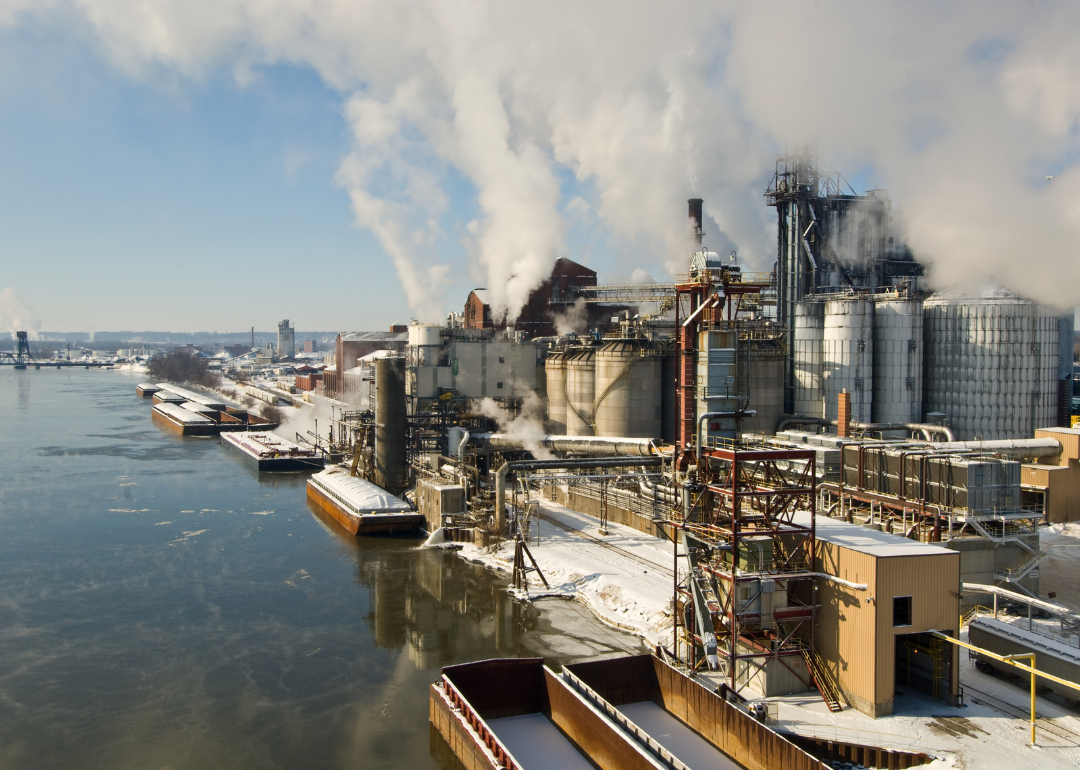
17% of people live near toxic release facilities—here's how it breaks down by state
17% of people live near toxic release facilities—here's how it breaks down by state
The Supreme Court on June 30 reduced the capability of the EPA to regulate carbon emissions of state power plants in its ruling on West Virginia vs. EPA. Beyond the ruling's impact on U.S. climate goals, it will also have ramifications for the people who live near power plants. Electricity generation is the second largest contributor to carbon emissions in the U.S., and exposure to pollutants from power plants heightens the risk of respiratory and cardiac health conditions.
Corporate sites across the U.S are releasing toxins into the surrounding land, air, and water—with many people living in affected communities unaware of the damage being caused. After an accidental release from a chemical plant in West Virginia chemical plant in 1985, Congress passed the Emergency Planning and Community Right-to-Know Act. The act established the EPA Toxic Release Inventory, which provides citizens with crucial information on what toxins are being emitted in their areas and which companies are doing the emitting. The TRI has allowed certain states to put emission-curbing legislation in place to safeguard public health, such as when Massachusetts Gov. Charlie Baker passed legislation in 2019 allocating $2.4 billion to climate change resilience.
The EPA's TRI program currently recognizes 770 chemicals; any site that manufactures or uses these chemicals at above-average levels qualifies for listing in the TRI. Chemicals described by the TRI as "toxic" are known to cause cancer or other negative health issues, as well as adverse effects on the environment. Facilities report the amounts of chemicals they release annually to the TRI, with the "release" of a chemical meaning it is "emitted to the air or water, or placed in some type of land disposal."
The facilities in the TRI are usually quite large and deal in electricity, metals, mining, chemicals, or hazardous waste. However, not all toxic chemicals used by corporations are listed in the TRI, meaning its inventory of toxin-emitting sites is not exhaustive.
Stacker analyzed data from the EPA Toxic Release Inventory and the U.S. Census Bureau's five-year American Community Survey to identify the percent of each state's population living in census tracts with toxic release sites, as well as the corporations and facilities responsible for emitting the highest amounts of toxins annually. These results reflect the last full year of data, 2020, from the 2020 National Analysis Dataset released in October 2021.
Read on to discover where the most toxins are being released in your state, what part of your environment they may be polluting, and who is being affected
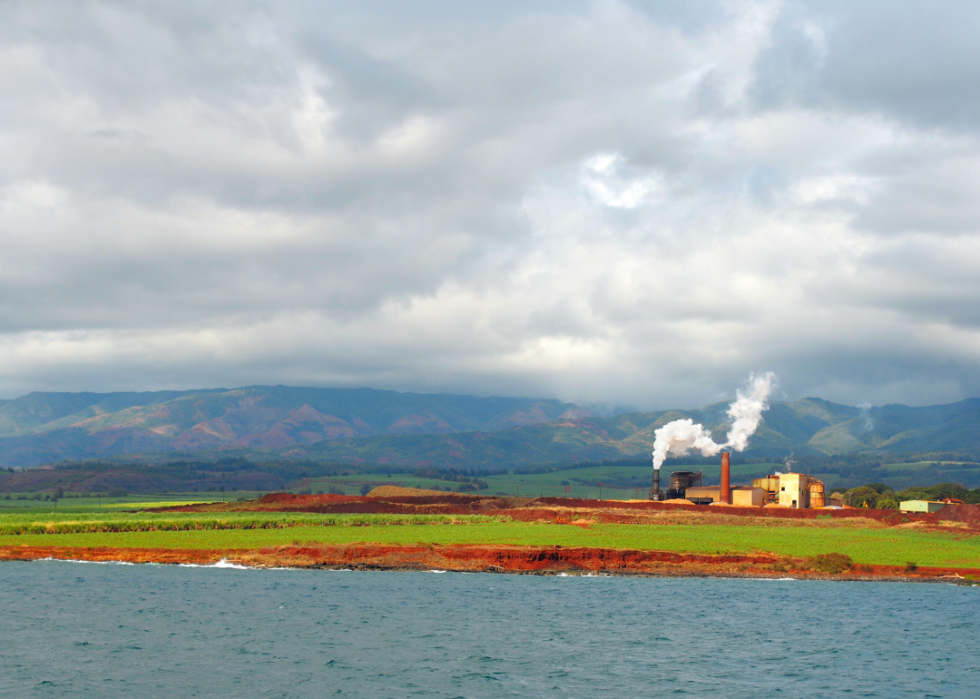
#50. Hawaii
- Population living near toxic release sites: 6.5%
--- 6.9% of state's white population
--- 6.9% of state's Hispanic population
--- 11.5% of state's Black population
--- 4.8% of state's Native American population
--- 5.0% of state's Asian population
--- 7.9% of state's Native Hawaiian/Pacific Islander population
- Total number of sites: 34
The two highest contributors to Hawaii’s toxic releases are the Hawaiian Electric's Kahe power plant, which released over 615,000 pounds of toxic elements in 2020, mainly into the air; and the Joint Base Pearl Harbor-Hickam, which accounted for about 483,000 pounds of emissions, mostly into the water. Much of Hawaii’s air pollution is sulfuric acid aerosols; the majority of water-polluting chemicals are nitrate compounds.
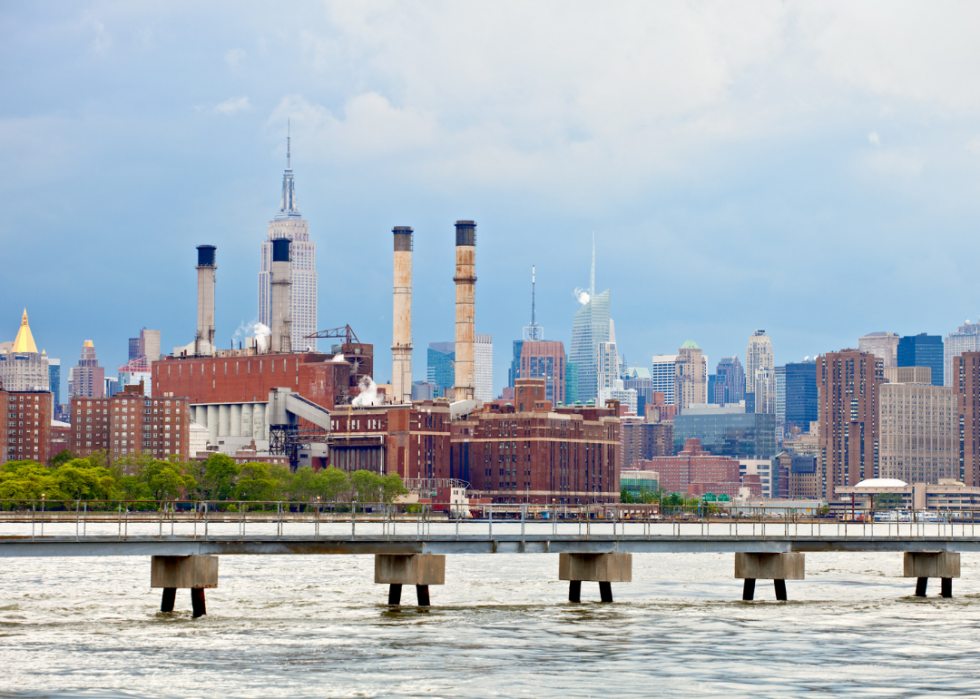
#49. New York
- Population living near toxic release sites: 8.3%
--- 10.1% of state's white population
--- 4.3% of state's Hispanic population
--- 4.2% of state's Black population
--- 7.2% of state's Native American population
--- 3.3% of state's Asian population
--- 6.9% of state's Native Hawaiian/Pacific Islander population
- Total number of sites: 581
Two facilities in New York reported releases of over 1 million pounds in 2020: St. Lawrence Zinc Company’s Balmat mine and Anheuser-Busch. These sites respectively released nearly 1.6 million, 1.2 million pounds of toxic pollution into the water and land.
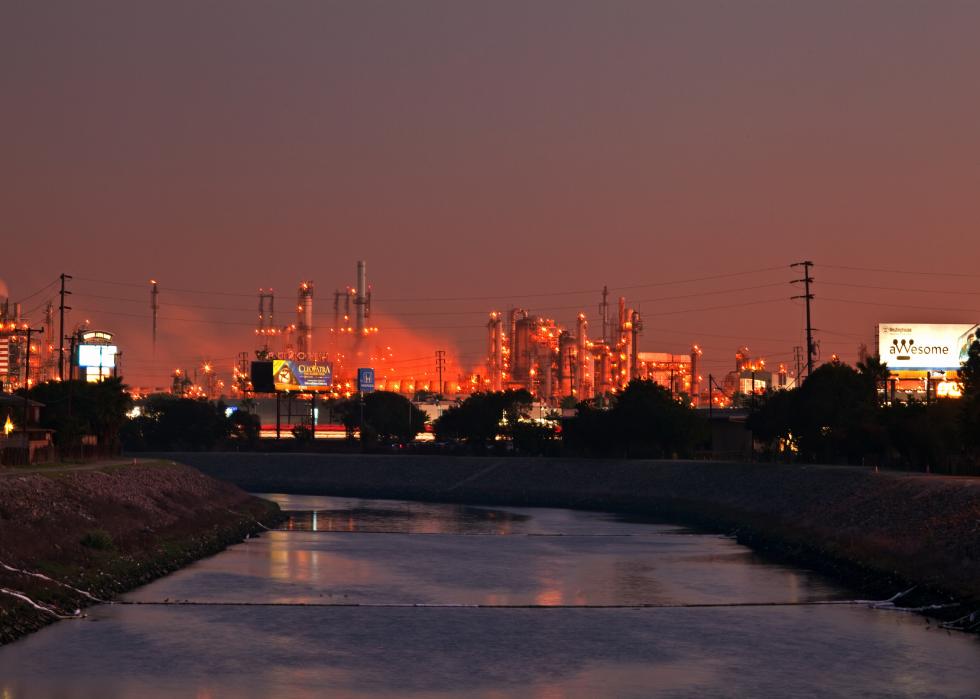
#48. California
- Population living near toxic release sites: 8.4%
--- 4.5% of state's white population
--- 10.0% of state's Hispanic population
--- 8.2% of state's Black population
--- 9.6% of state's Native American population
--- 7.3% of state's Asian population
--- 8.7% of state's Native Hawaiian/Pacific Islander population
- Total number of sites: 1160
California’s toxic emissions in 2020 were due to one very dominant offender: Clean Harbors' Buttonwillow landfill, which released over 8 million pounds of toxins into the land. The next highest release site, Chemical Waste Management, released under half of that amount. To combat this, the state’s Sustainable Freight Action Plan sets up a plan to use zero-emission (or near-zero) vehicles to transport freight within the state.
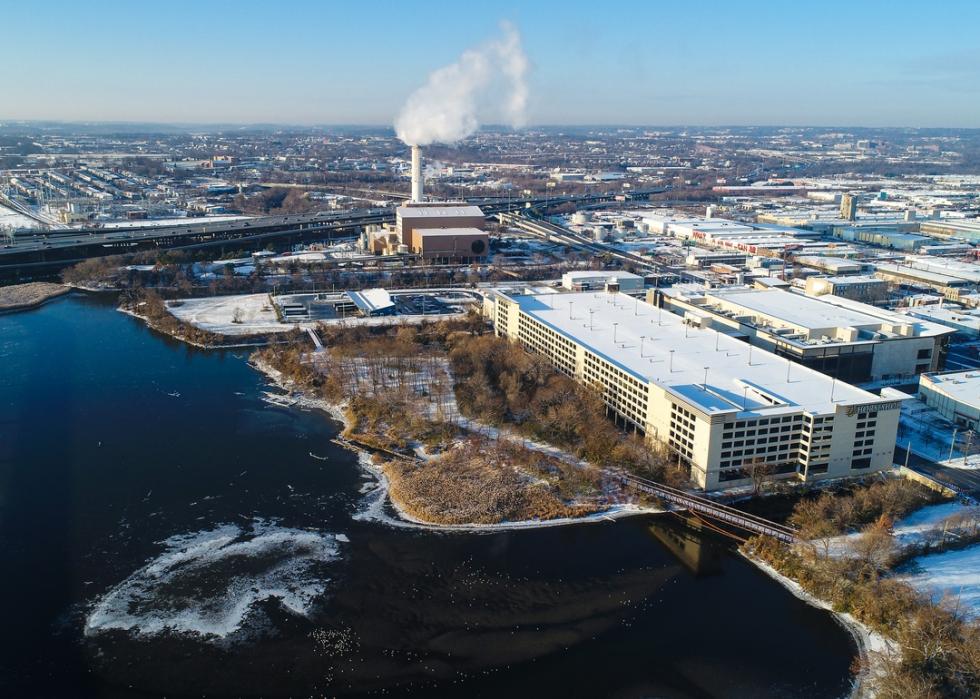
#47. Maryland
- Population living near toxic release sites: 8.4%
--- 9.2% of state's white population
--- 7.2% of state's Hispanic population
--- 6.2% of state's Black population
--- 8.3% of state's Native American population
--- 7.5% of state's Asian population
--- 5.5% of state's Native Hawaiian/Pacific Islander population
- Total number of sites: 161
Valley Proteins' poultry processing plant in Linkwood released over 2.5 million pounds of emissions into land in 2020. This made up a sizeable portion of the 4 million pounds of on-site and off-site toxic releases emitted in Maryland that year.
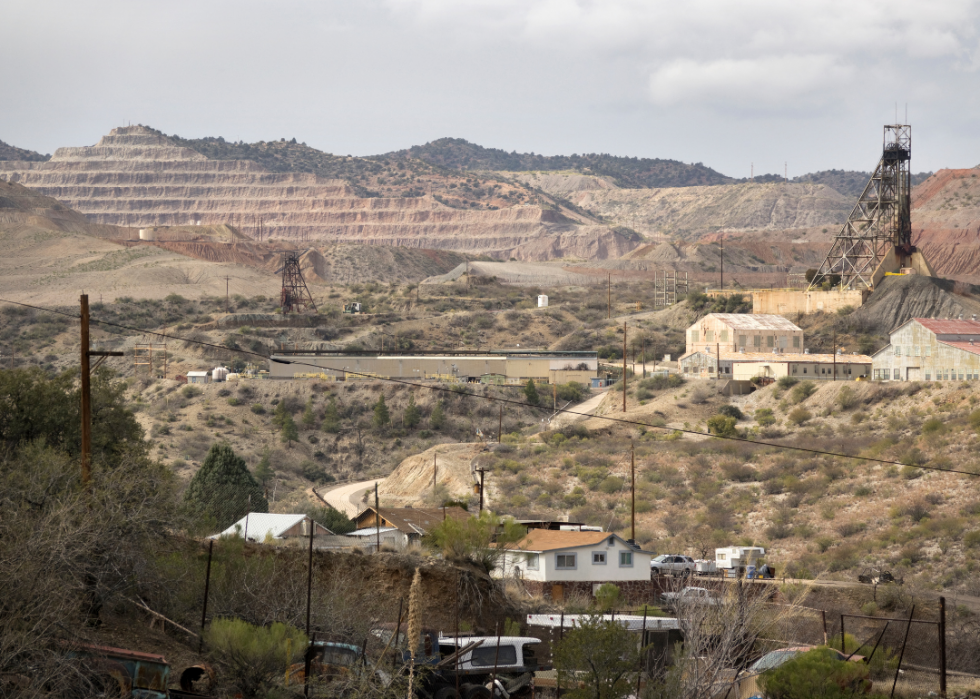
#46. Arizona
- Population living near toxic release sites: 9.1%
--- 5.8% of state's white population
--- 10.7% of state's Hispanic population
--- 9.8% of state's Black population
--- 10.1% of state's Native American population
--- 7.3% of state's Asian population
--- 10.6% of state's Native Hawaiian/Pacific Islander population
- Total number of sites: 257
In 2020, all of Arizona's top five toxin-emitters released toxins almost entirely into the land. These facilities were the Freeport-McMoRan mines in Miami and Morenci (25 million pounds and just under 10 million, respectively); the Pinto valley mine (just over 5 million pounds); the Freeport-McMoRan mine in (over 3.2 million pounds); and Asarco's Mission complex (around 2.8 million pounds).
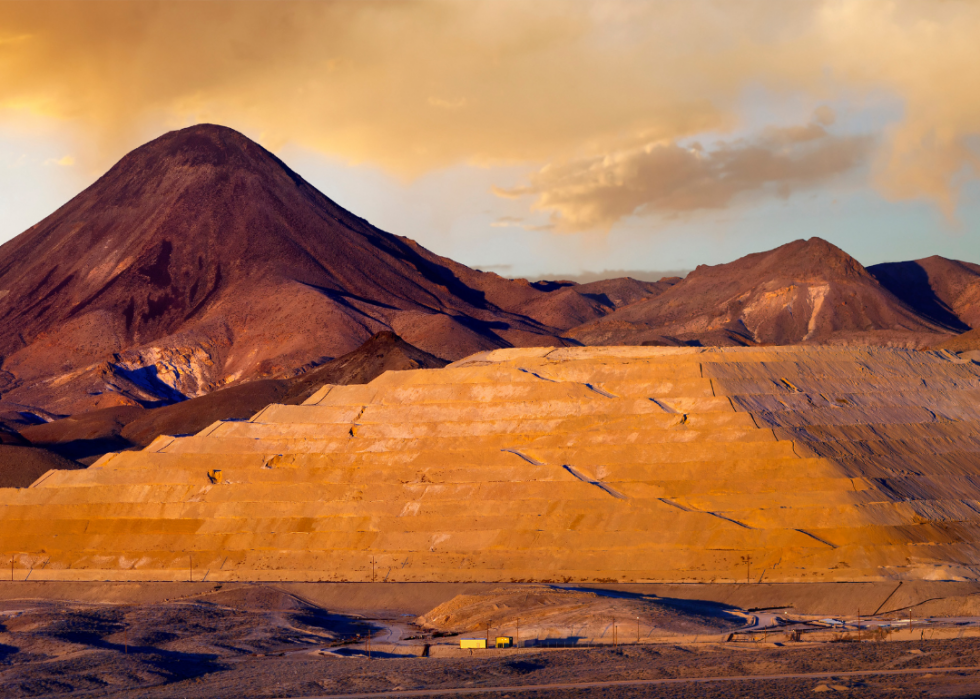
#45. Nevada
- Population living near toxic release sites: 9.3%
--- 8.1% of state's white population
--- 7.6% of state's Hispanic population
--- 8.6% of state's Black population
--- 20.1% of state's Native American population
--- 7.0% of state's Asian population
--- 2.1% of state's Native Hawaiian/Pacific Islander population
- Total number of sites: 142
Nevada emitted the highest amount of toxins in the United States, with 464.7 million pounds of disposal and release in 2020. This ranking is primarily due to Nevada Gold Mines, which released 220 million pounds of toxins across four facilities in 2020.
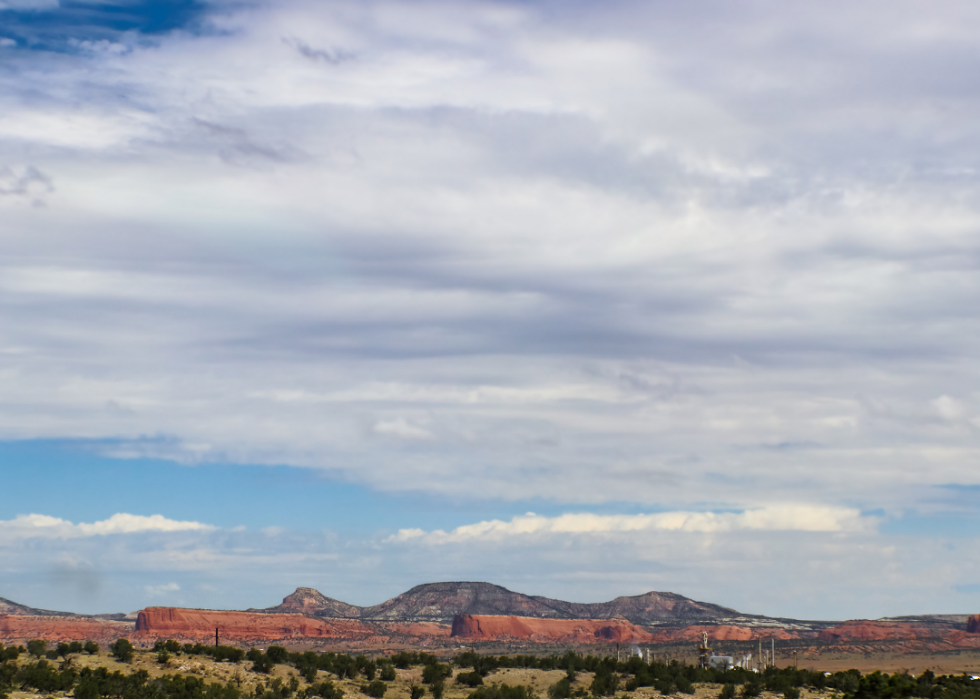
#44. New Mexico
- Population living near toxic release sites: 9.9%
--- 4.8% of state's white population
--- 9.5% of state's Hispanic population
--- 11.0% of state's Black population
--- 13.0% of state's Native American population
--- 11.0% of state's Asian population
--- 15.7% of state's Native Hawaiian/Pacific Islander population
- Total number of sites: 68
New Mexico was one of the lowest toxin-emitting states in 20202, ranking 52 out of 56 territories in the U.S. (based on releases per square mile). Toxic releases went almost entirely into the land, with the largest source, the Jal #3 gas plant, contributing a little over 6.4 million pounds.
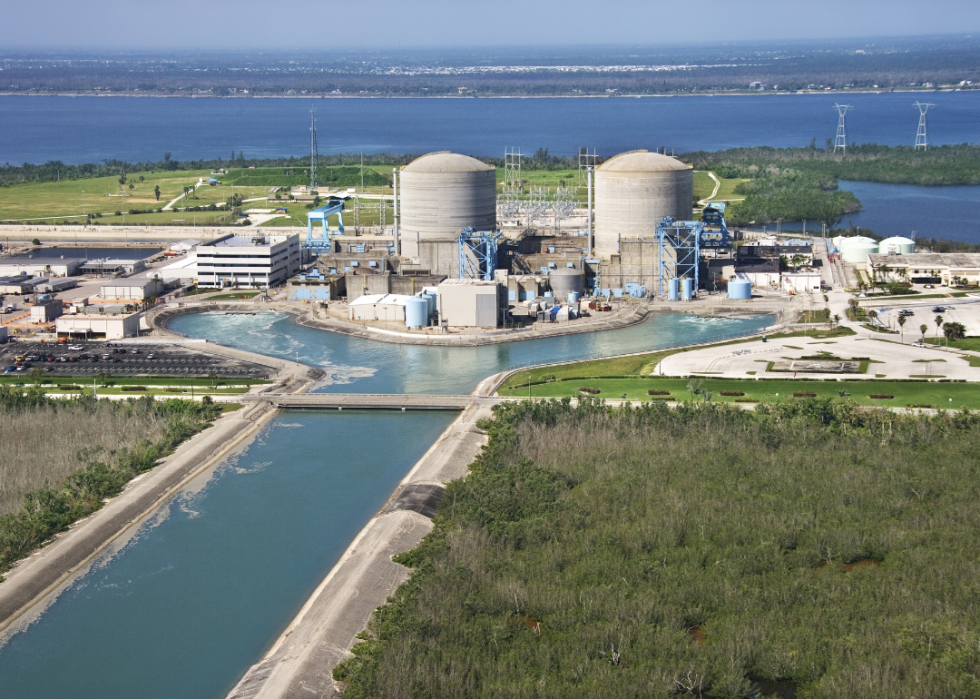
#43. Florida
- Population living near toxic release sites: 11.1%
--- 8.3% of state's white population
--- 8.8% of state's Hispanic population
--- 13.2% of state's Black population
--- 12.6% of state's Native American population
--- 10.1% of state's Asian population
--- 12.1% of state's Native Hawaiian/Pacific Islander population
- Total number of sites: 670
Ascend Performance Materials eclipsed other Florida-based toxic release sites, releasing 23.2 million pounds of toxins into the land in 2020. The next closest offender, Northside Generating Station, released less than 2.5 million pounds of toxins. Of the toxic blend being released into the water, 65% is nitrate compounds, with the next-highest ingredient, ammonia, tallying up to 13%.
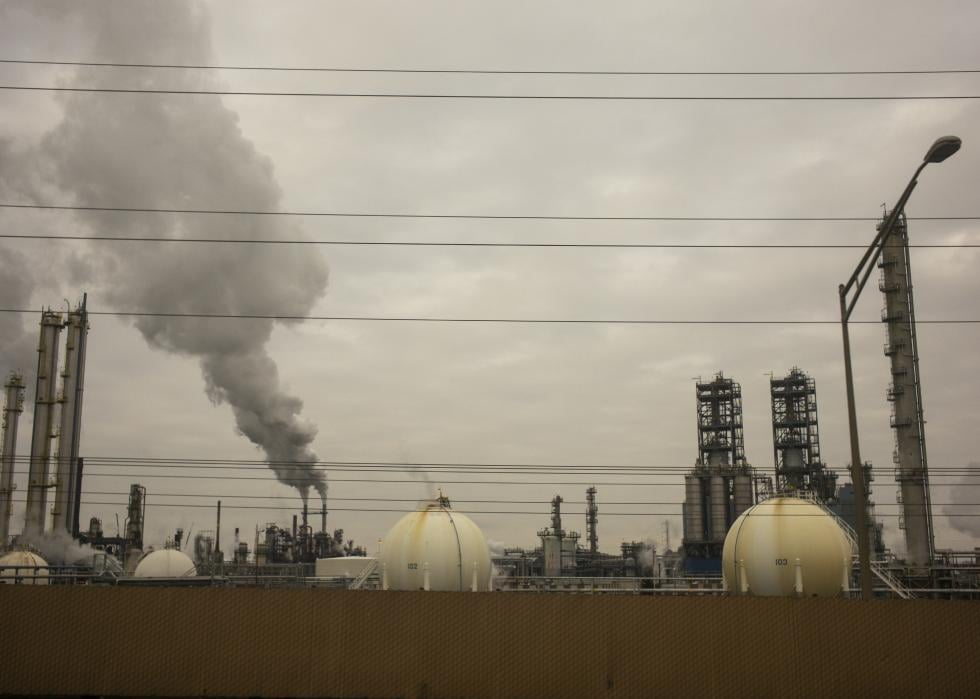
#42. New Jersey
- Population living near toxic release sites: 11.9%
--- 9.6% of state's white population
--- 12.7% of state's Hispanic population
--- 10.7% of state's Black population
--- 15.9% of state's Native American population
--- 12.7% of state's Asian population
--- 14.8% of state's Native Hawaiian/Pacific Islander population
- Total number of sites: 325
New Jersey ranked pretty high in 2020 toxin emissions, coming in ninth of 56 with 11.5 million pounds of toxins released into the air, water, and land. The state's two most significant sources were Phillips 66's Refinery and Clean Earth of New Jersey, companies that respectively released approximately 2.85 million and 1.7 million pounds of toxins that year.
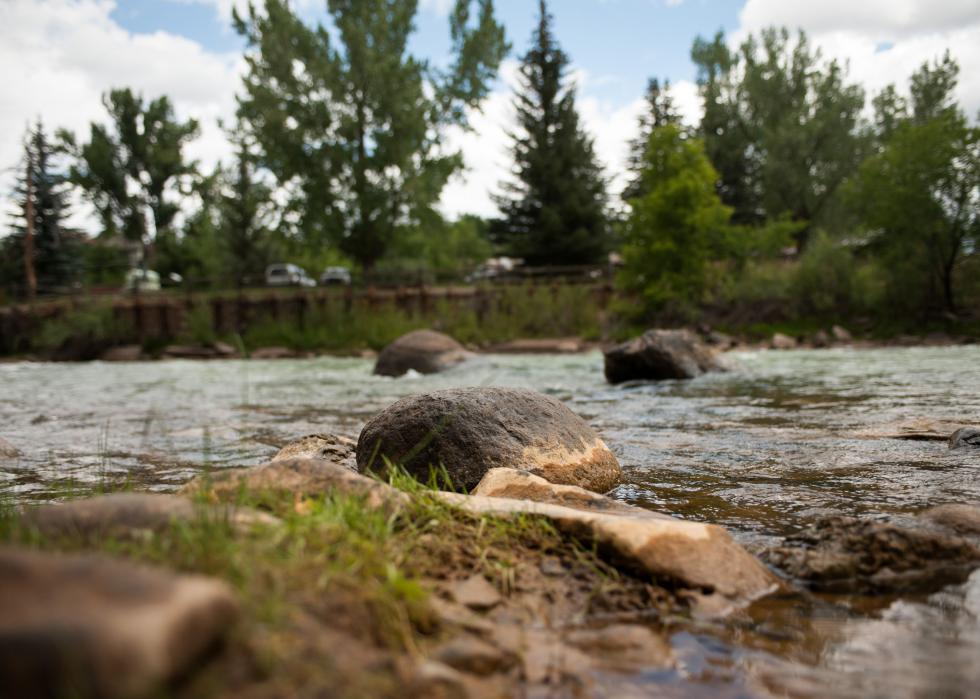
#41. Colorado
- Population living near toxic release sites: 12.1%
--- 9.8% of state's white population
--- 13.4% of state's Hispanic population
--- 9.6% of state's Black population
--- 11.6% of state's Native American population
--- 7.8% of state's Asian population
--- 9.7% of state's Native Hawaiian/Pacific Islander population
- Total number of sites: 236
Most toxins released in Colorado have affected the land, with the Cripple Creek & Victor Gold Mine releasing around 5.6 million pounds of toxins in 2020. To combat these toxic practices, the state has started a "green banking" initiative that aims to fund clean energy projects using private capital.
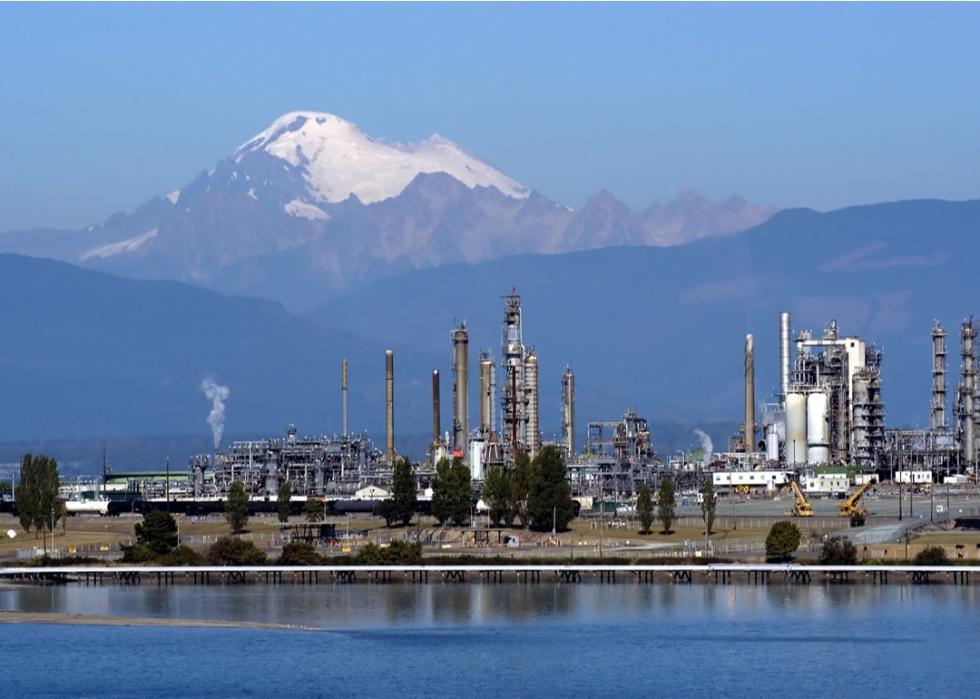
#40. Washington
- Population living near toxic release sites: 12.7%
--- 11.1% of state's white population
--- 18.9% of state's Hispanic population
--- 10.9% of state's Black population
--- 17.0% of state's Native American population
--- 9.6% of state's Asian population
--- 11.6% of state's Native Hawaiian/Pacific Islander population
- Total number of sites: 303
Washington state’s 2020 toxin emissions were led by the Puget Sound Naval Shipyard and base, which released 1.9 million pounds of toxins that year. Of the total on-site releases in the state that year, 1 million pounds of toxic material went into the land, 2.7 million pounds into the water, and 6.6 million pounds into the air.
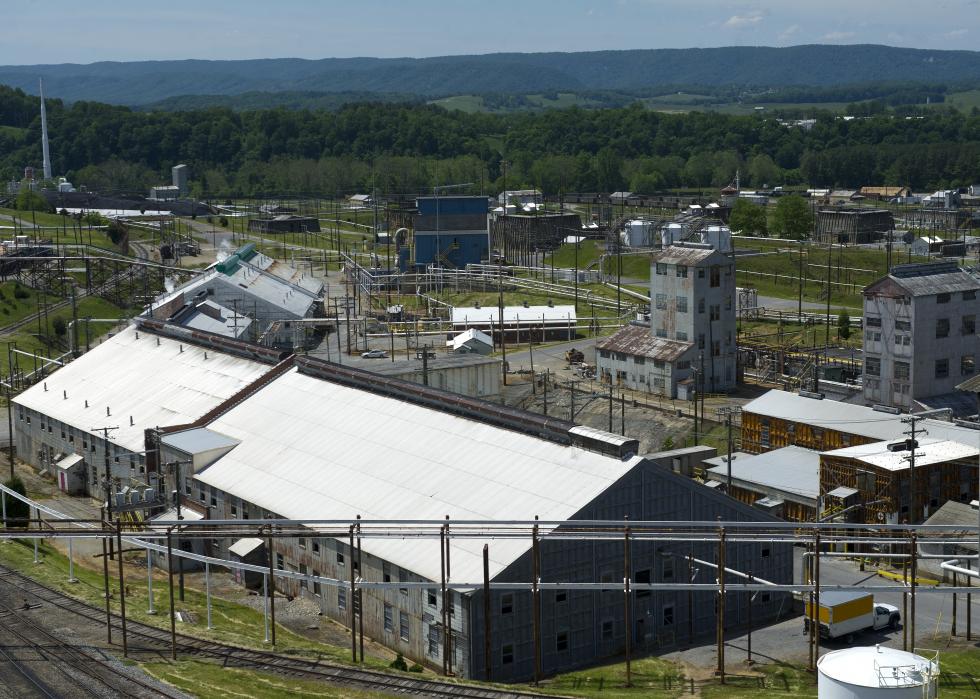
#39. Virginia
- Population living near toxic release sites: 14.5%
--- 14.2% of state's white population
--- 12.2% of state's Hispanic population
--- 14.9% of state's Black population
--- 13.2% of state's Native American population
--- 6.9% of state's Asian population
--- 19.7% of state's Native Hawaiian/Pacific Islander population
- Total number of sites: 416
The majority of toxins released in Virginia in 2020 were emitted by the Radford Army Ammunition Plant, which deposited over 10 million pounds of chemicals into the water. Overall in the state, nitrate compounds made up 97% of the toxins released into the water. In 2019, the state established steps to curb methane emissions from infrastructure and landfills.
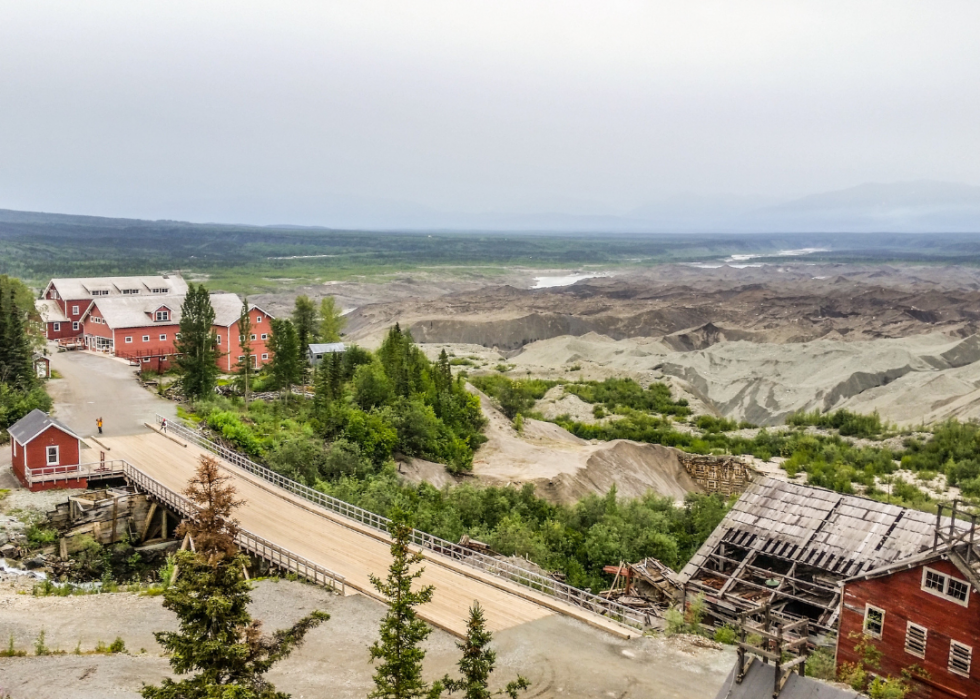
#38. Alaska
- Population living near toxic release sites: 16.6%
--- 14.9% of state's white population
--- 21.9% of state's Hispanic population
--- 22.0% of state's Black population
--- 17.3% of state's Native American population
--- 16.1% of state's Asian population
--- 20.3% of state's Native Hawaiian/Pacific Islander population
- Total number of sites: 41
The top five toxin-emitting sites in Alaska are all metal mines that release toxins almost solely into the land. In 2020, Red Dog Operations released over 540 million pounds; Hecla Greens Creek mine, around 58 million pounds; Fort Knox mine, approximately 15 million pounds; and the Pogo mine about 6 million, and Coeur Alaska's Kensington mine released around 2.2 million pounds.
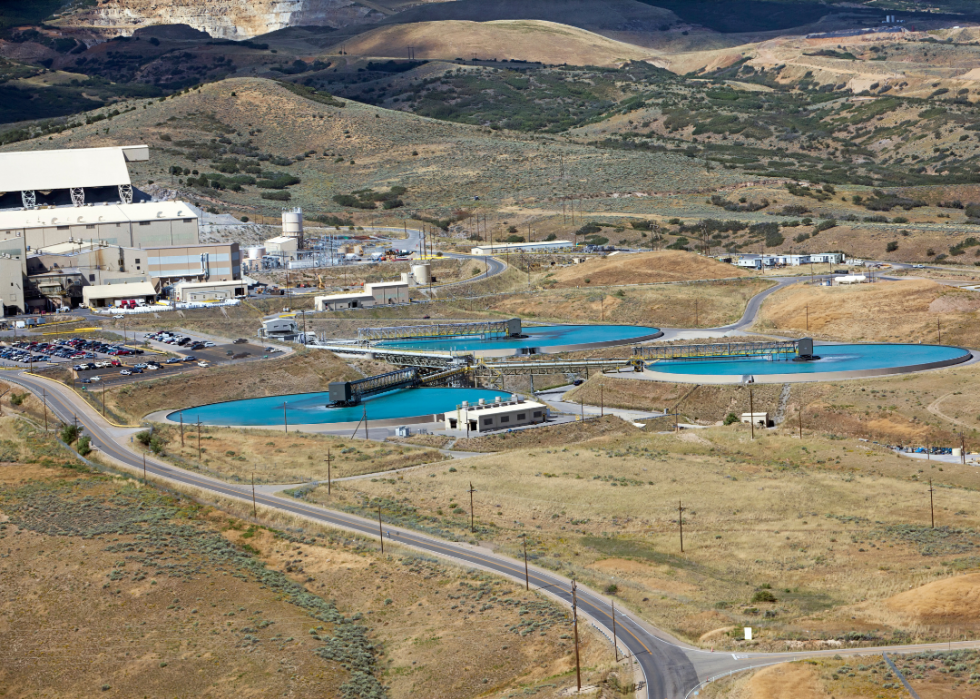
#37. Utah
- Population living near toxic release sites: 16.8%
--- 15.0% of state's white population
--- 17.7% of state's Hispanic population
--- 17.2% of state's Black population
--- 19.9% of state's Native American population
--- 17.3% of state's Asian population
--- 17.7% of state's Native Hawaiian/Pacific Islander population
- Total number of sites: 197
Utah is the fifth-worst toxin releasing state in the U.S., having generated 183.2 million of the country's 3 billion pounds of toxin releases in 2020. The majority came from the Kennecott Utah Copper mine and power plant, which emitted nearly 130 million pounds of toxins into the land in 2020.
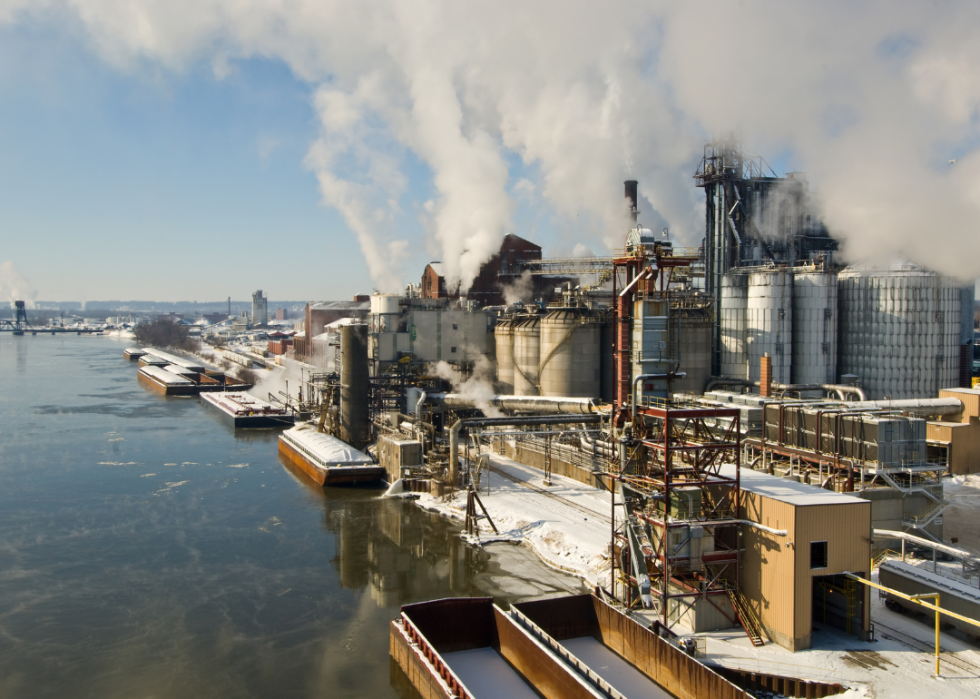
#36. Illinois
- Population living near toxic release sites: 17.3%
--- 15.5% of state's white population
--- 18.5% of state's Hispanic population
--- 14.2% of state's Black population
--- 19.4% of state's Native American population
--- 13.6% of state's Asian population
--- 17.3% of state's Native Hawaiian/Pacific Islander population
- Total number of sites: 948
Illinois was the thirteenth-highest toxin-emitting state in 2020. Prairie State Energy Campus contributed 8.2 million pounds, and Wieland Metals Inc. contributed 5.6 million pounds.
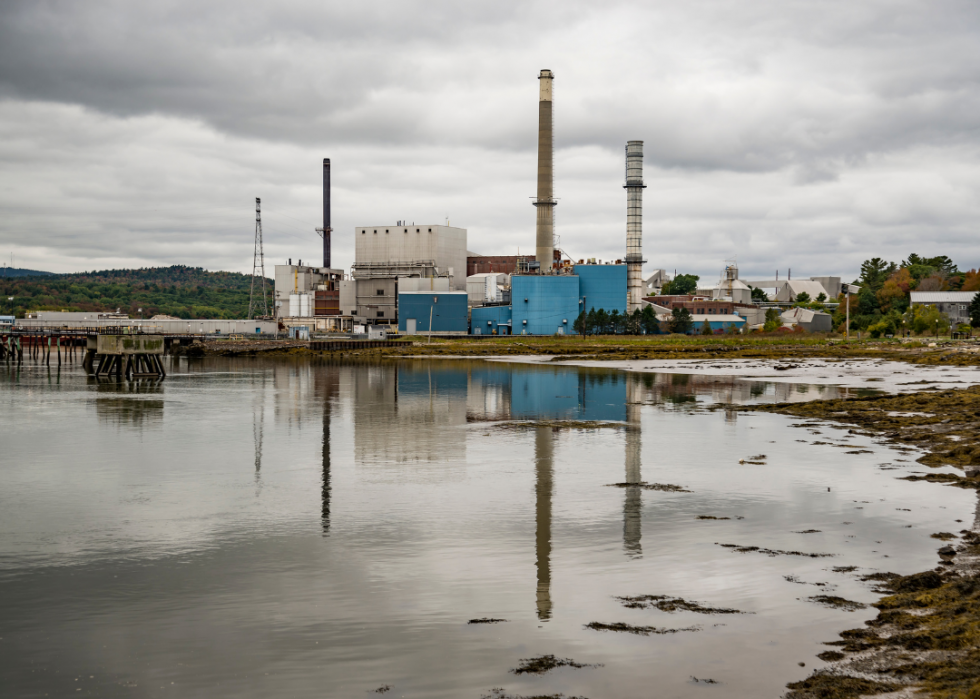
#35. Maine
- Population living near toxic release sites: 17.6%
--- 17.2% of state's white population
--- 18.0% of state's Hispanic population
--- 24.3% of state's Black population
--- 24.4% of state's Native American population
--- 17.8% of state's Asian population
--- 3.5% of state's Native Hawaiian/Pacific Islander population
- Total number of sites: 79
The total toxic emissions released in Maine in 2020 tallied up to 7.9 million pounds. Most of these emissions came from ND Paper's Rumford Division, which released just over 2.25 million pounds; McCain Foods (over 2 million pounds); and Sappi’s Somerset Mill (nearly 1.7 million pounds).
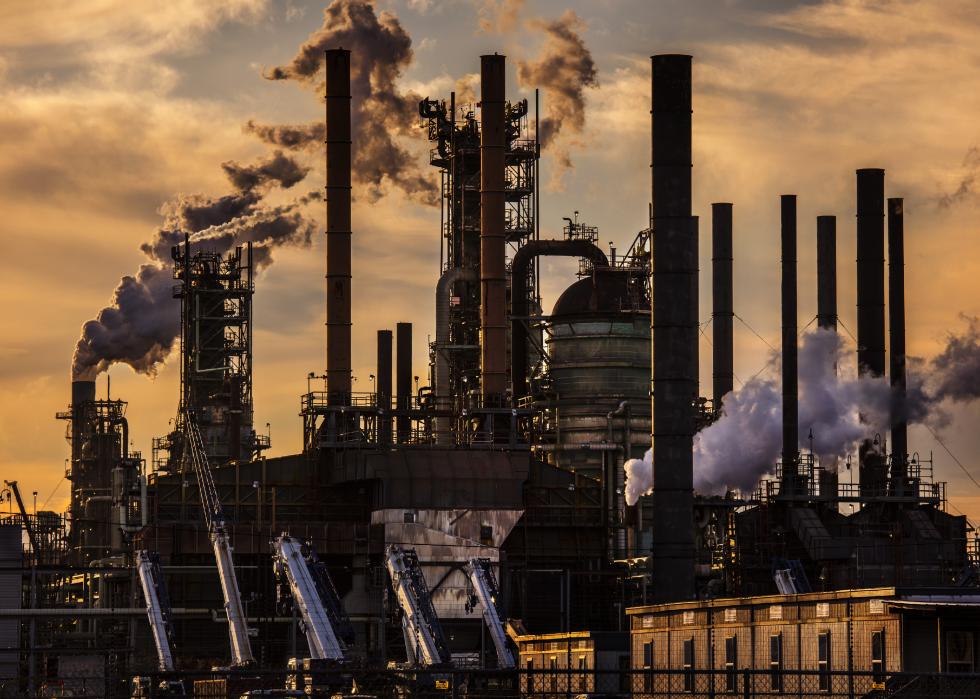
#34. Louisiana
- Population living near toxic release sites: 18.1%
--- 18.1% of state's white population
--- 16.1% of state's Hispanic population
--- 16.6% of state's Black population
--- 24.0% of state's Native American population
--- 12.7% of state's Asian population
--- 5.0% of state's Native Hawaiian/Pacific Islander population
- Total number of sites: 360
Louisiana ranked fourth of the 56 U.S. states and territories in 2020 toxin remittance. The worst offending facilities were Bayer CropScience, which released nearly 18 million pounds of toxins into the land; the Cornerstone Chemical Company, which emitted nearly 12 million pounds into the land; and CF Industries, which released over 10 million pounds into the water and air.
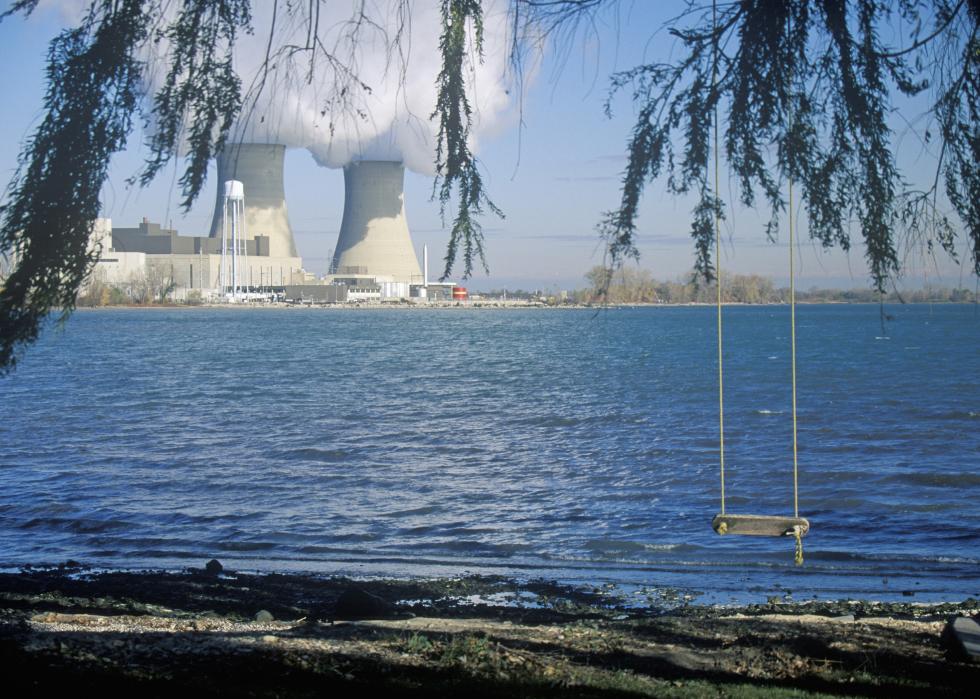
#33. Michigan
- Population living near toxic release sites: 18.3%
--- 18.5% of state's white population
--- 22.9% of state's Hispanic population
--- 11.9% of state's Black population
--- 18.2% of state's Native American population
--- 12.8% of state's Asian population
--- 20.0% of state's Native Hawaiian/Pacific Islander population
- Total number of sites: 769
The majority of toxins released by Michigan facilities in 2020 affected the land. Of these, over 9 million pounds came from Wayne Disposal Inc. and 7.5 million from Eagle Mine’s Humboldt mill.
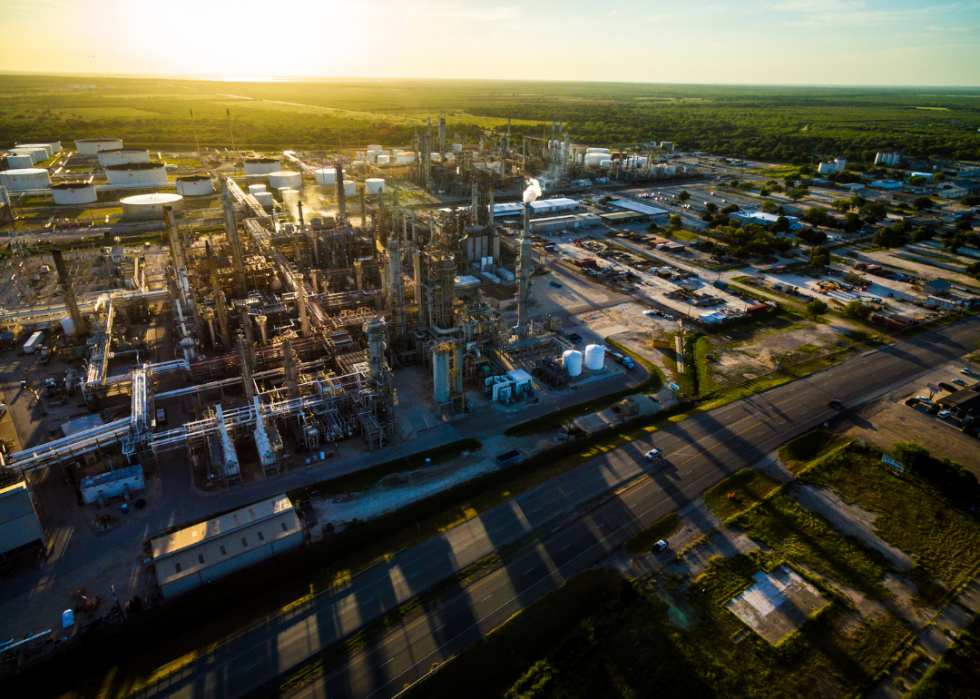
#32. Texas
- Population living near toxic release sites: 18.4%
--- 11.1% of state's white population
--- 17.1% of state's Hispanic population
--- 20.4% of state's Black population
--- 22.7% of state's Native American population
--- 14.4% of state's Asian population
--- 20.1% of state's Native Hawaiian/Pacific Islander population
- Total number of sites: 1734
Of 2020's top five toxic release sites in Texas, four are chemical plants. Ascend Performance Materials' Chocolate Bayou plant, the INEOS Nitriles Green Lake plant, TM Deer Park Services, and Lyondell Chemical Company released around 20.6 million, 18.7 million, 10.3 million, and 5.1 million pounds of toxins, respectively. US Ecology Texas, which deals in hazardous waste, released around 7.9 million pounds of toxins.
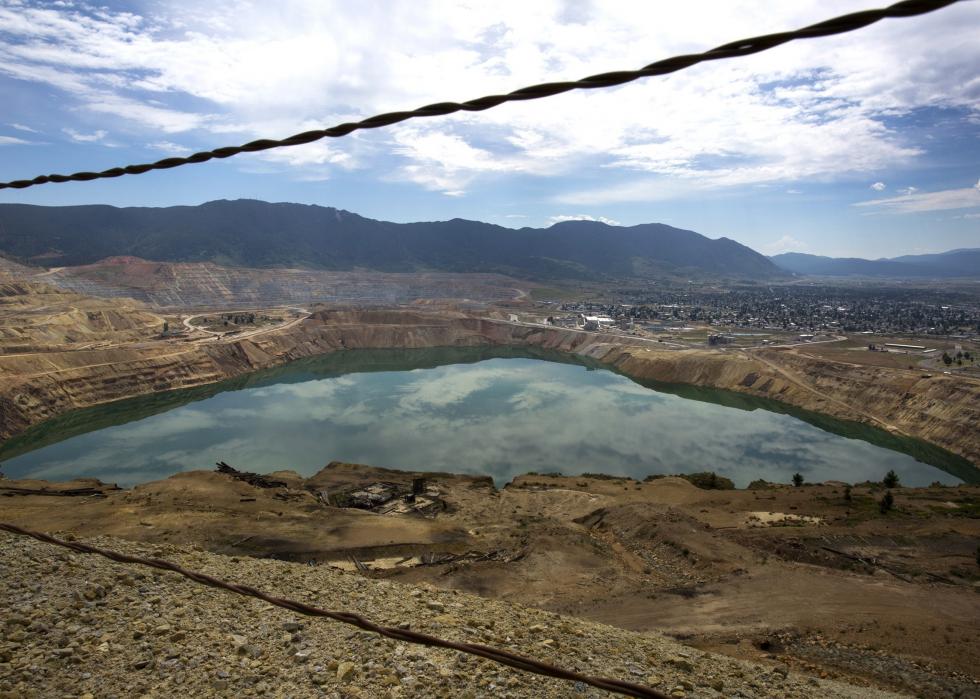
#31. Montana
- Population living near toxic release sites: 18.6%
--- 18.5% of state's white population
--- 23.7% of state's Hispanic population
--- 22.6% of state's Black population
--- 10.5% of state's Native American population
--- 13.9% of state's Asian population
--- 21.2% of state's Native Hawaiian/Pacific Islander population
- Total number of sites: 62
Of Montana's 61.7 million pounds of released toxins in 2020, most came from two dominant sites: Montana Resources, a mining company, and the Colstrip power plant released approximately 46.3 million and 7.2 million pounds of toxins into the land. In contrast, the next-highest land emitter, the Sibanye mine site in Stillwater, released a little over 415,000 pounds.
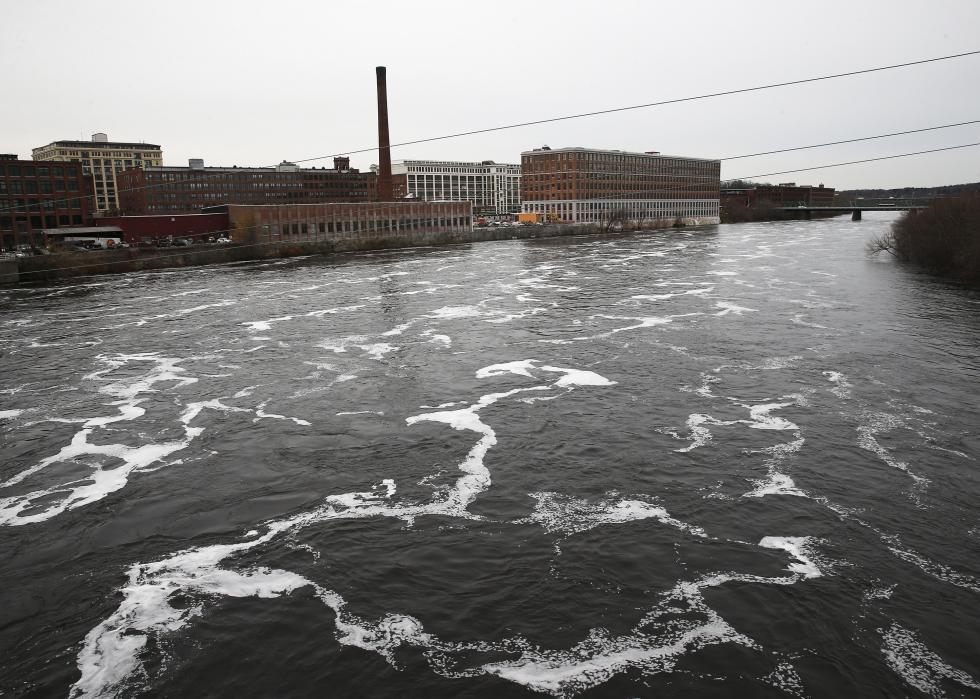
#30. Massachusetts
- Population living near toxic release sites: 18.7%
--- 18.5% of state's white population
--- 14.9% of state's Hispanic population
--- 12.7% of state's Black population
--- 17.8% of state's Native American population
--- 16.8% of state's Asian population
--- 15.2% of state's Native Hawaiian/Pacific Islander population
- Total number of sites: 362
In 2019, Massachusetts Gov. Charlie Baker passed legislation allocating $2.4 billion toward combatting climate change. In 2020, Solutia, a plastics and rubber manufacturer in Springfield, released about 379,000 pounds of toxins into the environment. Calloway Golf Ball Operations emitted nearly 250,000 pounds of chemicals.
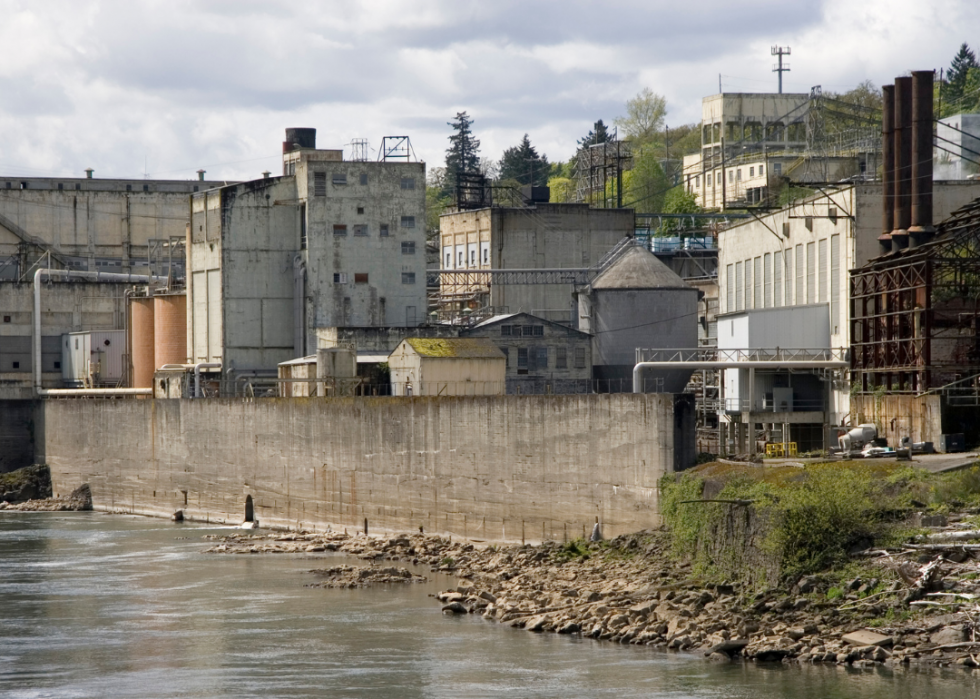
#29. Oregon
- Population living near toxic release sites: 19.4%
--- 17.4% of state's white population
--- 21.7% of state's Hispanic population
--- 16.4% of state's Black population
--- 21.6% of state's Native American population
--- 12.9% of state's Asian population
--- 16.5% of state's Native Hawaiian/Pacific Islander population
- Total number of sites: 281
Oregon was one of the cleanest states in 2020, ranking 50 out of 56 in toxin releases. The state's highest contributing site, the Dyno Nobel St. Helens facility, emitted around 5.9 million pounds of toxins in 2020: the vast majority were released into the air and the rest into the water.
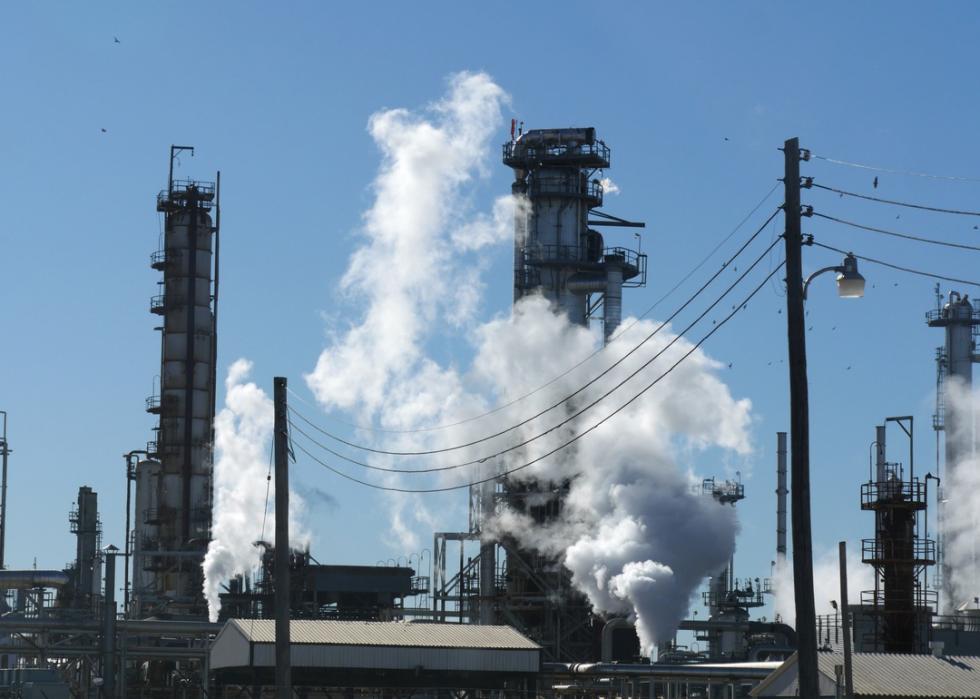
#28. Oklahoma
- Population living near toxic release sites: 20.3%
--- 18.3% of state's white population
--- 21.0% of state's Hispanic population
--- 18.4% of state's Black population
--- 22.4% of state's Native American population
--- 15.0% of state's Asian population
--- 15.8% of state's Native Hawaiian/Pacific Islander population
- Total number of sites: 362
Oklahoma’s biggest toxin-emitting site is a paper manufacturer: the International Paper facility released 5.9 million pounds of pollutants, mainly into the air, in 2020. Of the chemicals emitted into the atmosphere in Oklahoma in 2020, 50% was ammonia, 29% methanol, and 5% toluene.
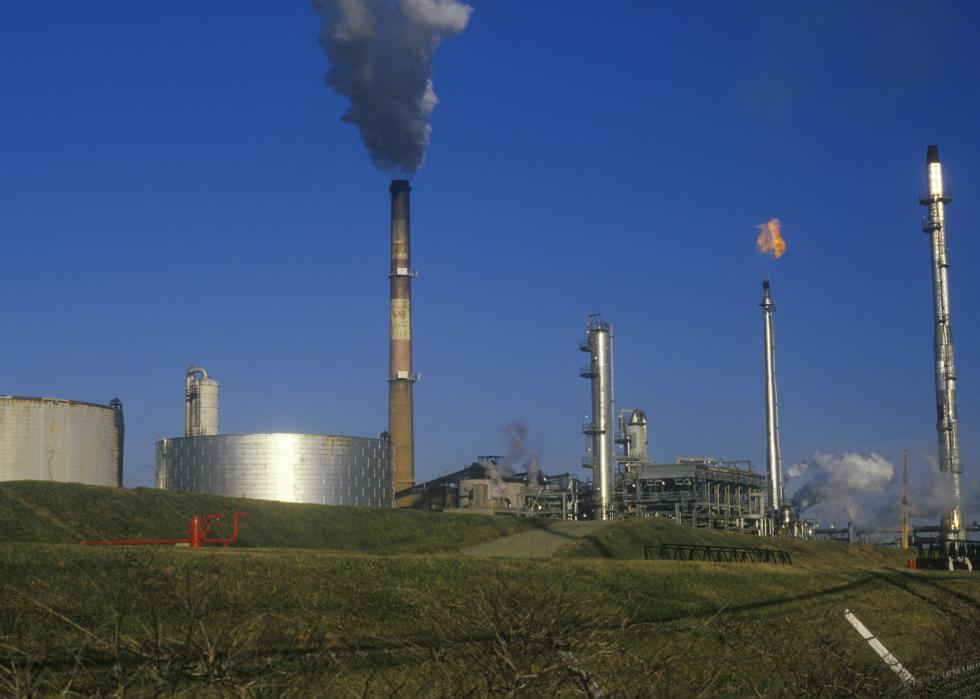
#27. Delaware
- Population living near toxic release sites: 20.5%
--- 17.3% of state's white population
--- 25.9% of state's Hispanic population
--- 23.1% of state's Black population
--- 23.3% of state's Native American population
--- 14.2% of state's Asian population
--- 64.8% of state's Native Hawaiian/Pacific Islander population
- Total number of sites: 58
Delaware was the second-highest toxin-releasing state in 2020. The vast majority of pollutants came from the Delaware City Refinery, which released around 6.5 million pounds of toxins, mostly into the water. Of the chemical mix emitted into Delaware’s atmosphere in 2020, 27% was ammonia, 23% hydrogen cyanide, and 20% sulfuric acid.
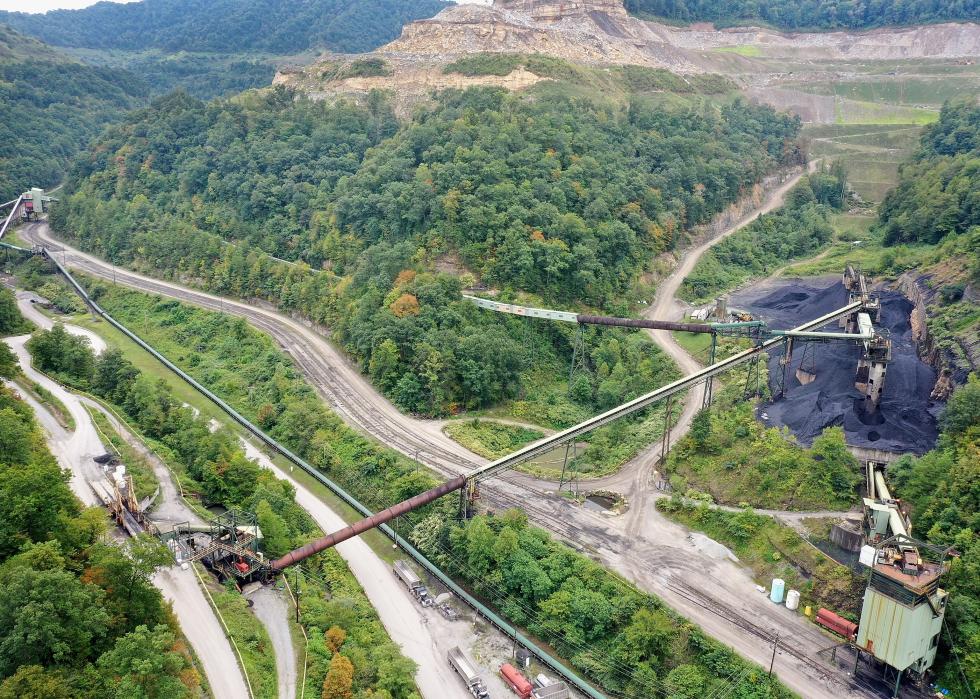
#26. Kentucky
- Population living near toxic release sites: 21.3%
--- 20.3% of state's white population
--- 25.5% of state's Hispanic population
--- 24.1% of state's Black population
--- 20.3% of state's Native American population
--- 16.4% of state's Asian population
--- 27.7% of state's Native Hawaiian/Pacific Islander population
- Total number of sites: 411
Clariant Corporation was the most significant contributor to Kentucky's 2020 toxin release, emitting over 8 million pounds. Kentucky's North American Stainless came in at 6 million pounds, with more than half going into the water. Of the chemicals in the Kentucky air in 2020, 28% was sulfuric acid and 14% methanol.
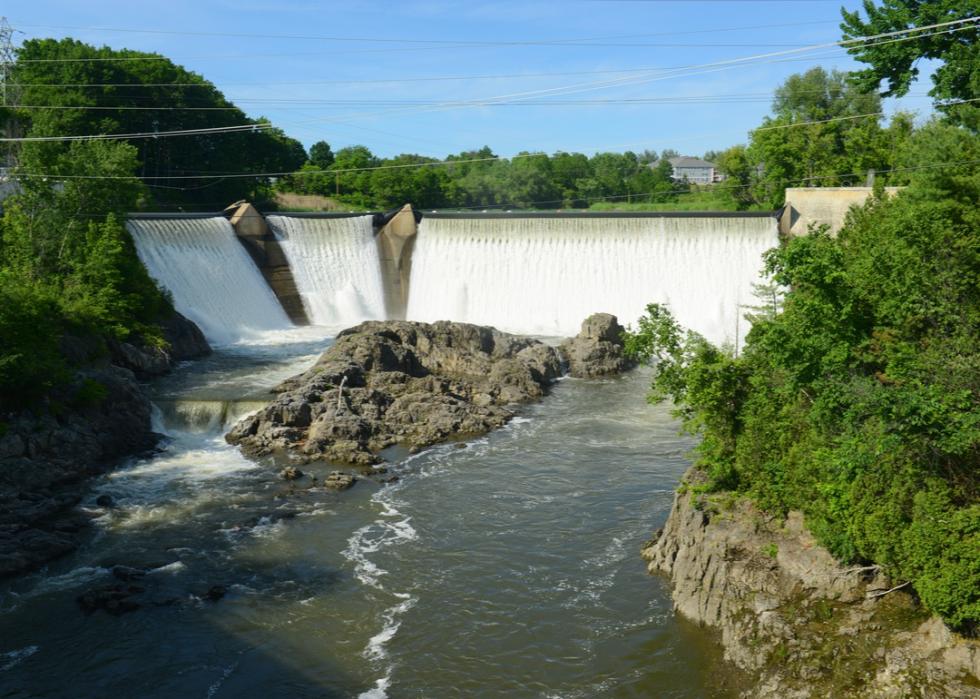
#25. Vermont
- Population living near toxic release sites: 21.7%
--- 21.3% of state's white population
--- 22.4% of state's Hispanic population
--- 22.3% of state's Black population
--- 28.3% of state's Native American population
--- 21.0% of state's Asian population
--- 51.7% of state's Native Hawaiian/Pacific Islander population
- Total number of sites: 36
Vermont is the third-cleanest state in terms of toxins, ranking 54 out of 56 in 2020. Most pollutants came from the GlobalFoundries plant, which manufactures computers and electronics. A little over 157,000 pounds of toxins were released, mostly into water, with another significant portion emitted into the atmosphere.
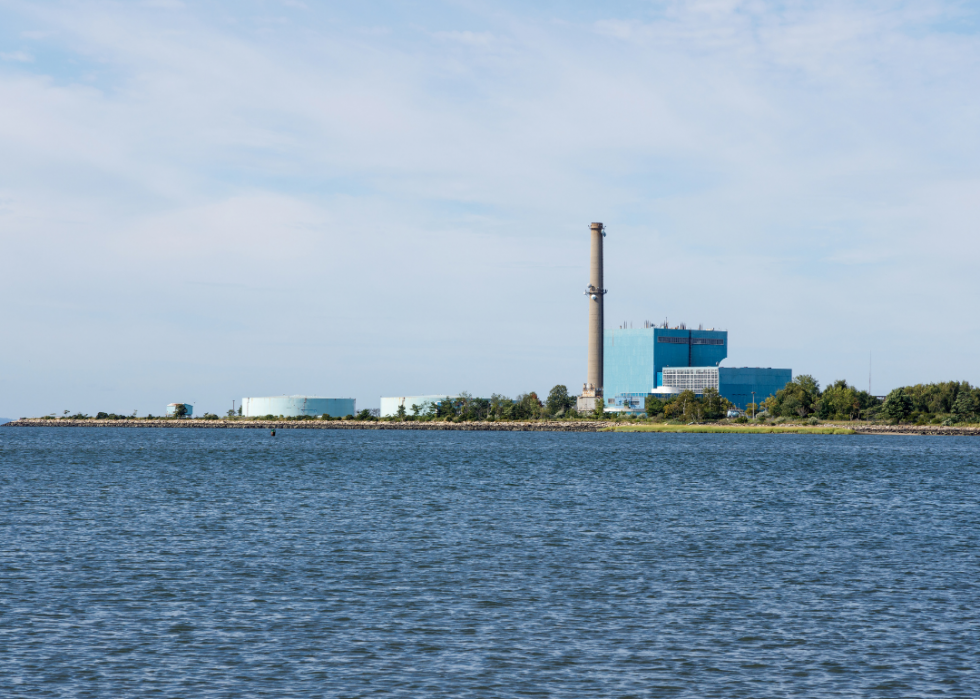
#24. Connecticut
- Population living near toxic release sites: 21.7%
--- 20.4% of state's white population
--- 18.3% of state's Hispanic population
--- 18.1% of state's Black population
--- 19.9% of state's Native American population
--- 21.6% of state's Asian population
--- 19.1% of state's Native Hawaiian/Pacific Islander population
- Total number of sites: 257
Clean Harbours of Connecticut, a hazardous waste company, emitted over 390,000 pounds of toxins into the environment of Connecticut in 2020. UniMetal Surface Finishing released nearly 128,000 pounds. Two of the chemicals released into the state's air that year iclude dichloromethane (comprising 10% of the toxins released) and toluene (8%).
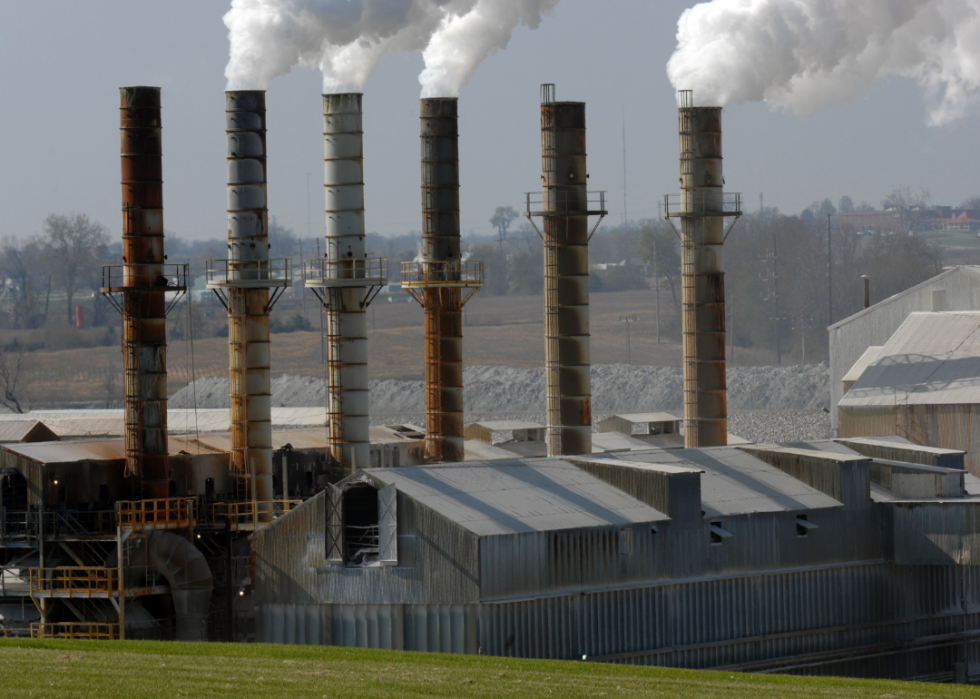
#23. Missouri
- Population living near toxic release sites: 21.7%
--- 21.9% of state's white population
--- 24.1% of state's Hispanic population
--- 15.3% of state's Black population
--- 28.2% of state's Native American population
--- 14.4% of state's Asian population
--- 24.3% of state's Native Hawaiian/Pacific Islander population
- Total number of sites: 507
Combination mine-and-mills comprised four of five of Missouri’s top toxin-emitting sites in 2020. The biggest offenders were facilities in Buick (over 11 million pounds), Brushy Creek (over 6.7 million pounds), Sweetwater (about 3.8 million pounds), and Fletcher (about 3.2 million pounds). The vast majority of toxins were released into the land.
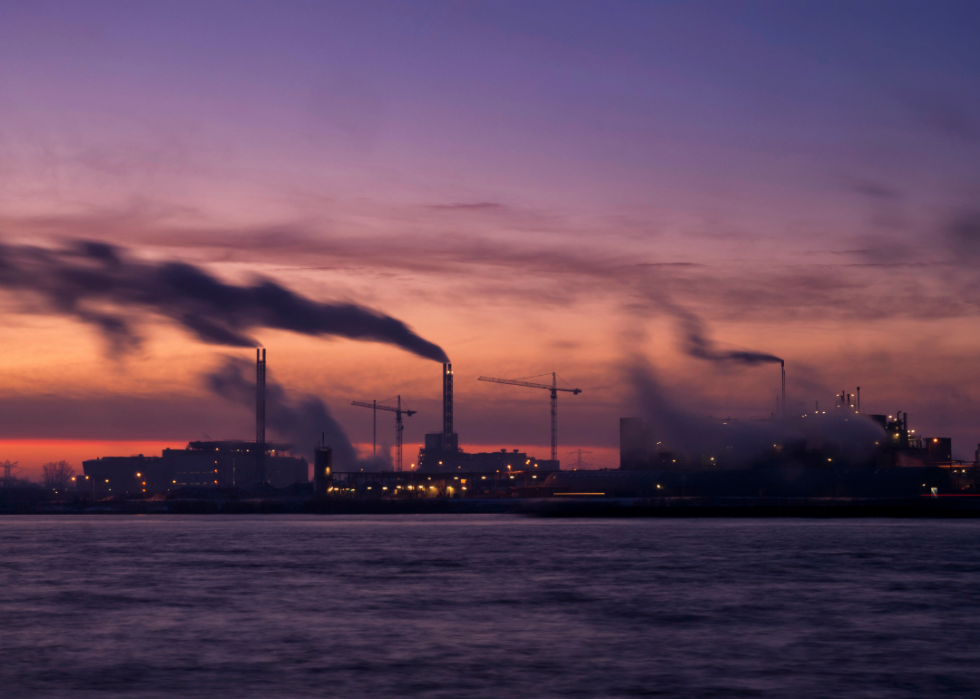
#22. Tennessee
- Population living near toxic release sites: 21.9%
--- 21.7% of state's white population
--- 20.4% of state's Hispanic population
--- 18.8% of state's Black population
--- 25.4% of state's Native American population
--- 16.4% of state's Asian population
--- 22.3% of state's Native Hawaiian/Pacific Islander population
- Total number of sites: 633
A total of 73.5 million pounds of toxins were released in Tennessee in 2020. Of these, nearly 15 million were contributed by Nyrstar Clarksville; 8 million by Chemours’ Johnsonville plant; a little over 4 million from the Holston Army Ammunition Plant; and 4.2 million from the Nystar facility in Gordonsville.
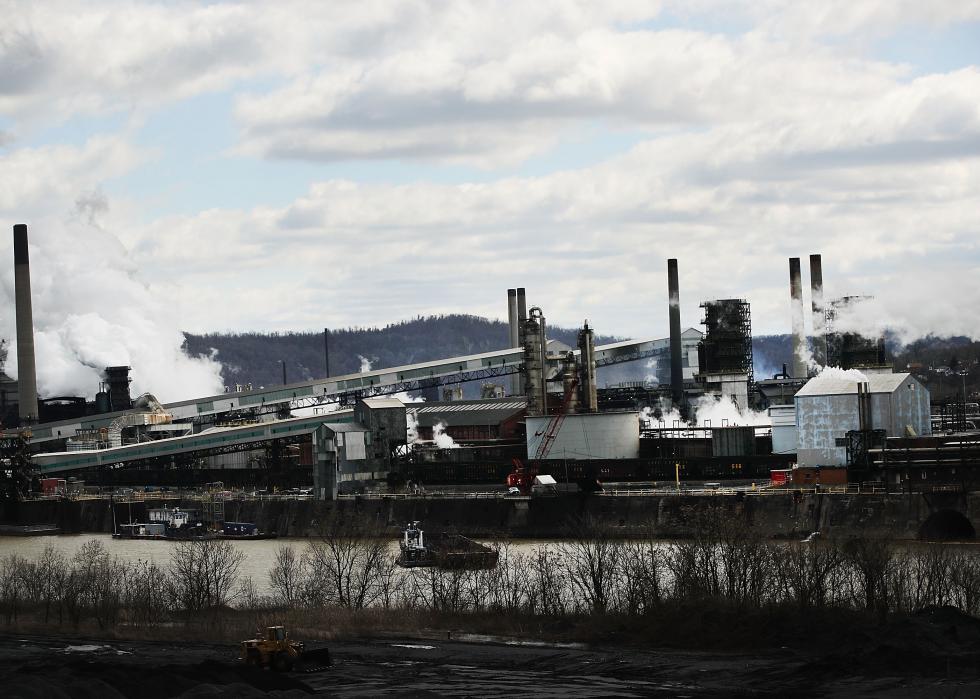
#21. Pennsylvania
- Population living near toxic release sites: 22.2%
--- 23.4% of state's white population
--- 17.0% of state's Hispanic population
--- 10.9% of state's Black population
--- 18.3% of state's Native American population
--- 15.6% of state's Asian population
--- 15.1% of state's Native Hawaiian/Pacific Islander population
- Total number of sites: 1042
Of the 48.6 million pounds of toxins emitted on-site in Pennsylvania in 2020, 10.5 million were released into the air, 5.8 million into the water, and 17 million into the land. Mon Valley Works’ Edgar Thomson plant emitted about 5 million pounds, and MAX Environmental’s facility in Yukon released a little over 12 million.

#20. Georgia
- Population living near toxic release sites: 22.6%
--- 20.6% of state's white population
--- 26.3% of state's Hispanic population
--- 21.7% of state's Black population
--- 23.5% of state's Native American population
--- 19.2% of state's Asian population
--- 29.7% of state's Native Hawaiian/Pacific Islander population
- Total number of sites: 697
The majority of toxins emitted in Georgia in 2020 were released into the air, with methanol making up 36% of air emissions and ammonia 34%. Rayonier Advanced Materials’ mill in Jesup released over 4.8 million pounds of toxins, and the BASF facility in Attapulgus released just over 3.8 million pounds.
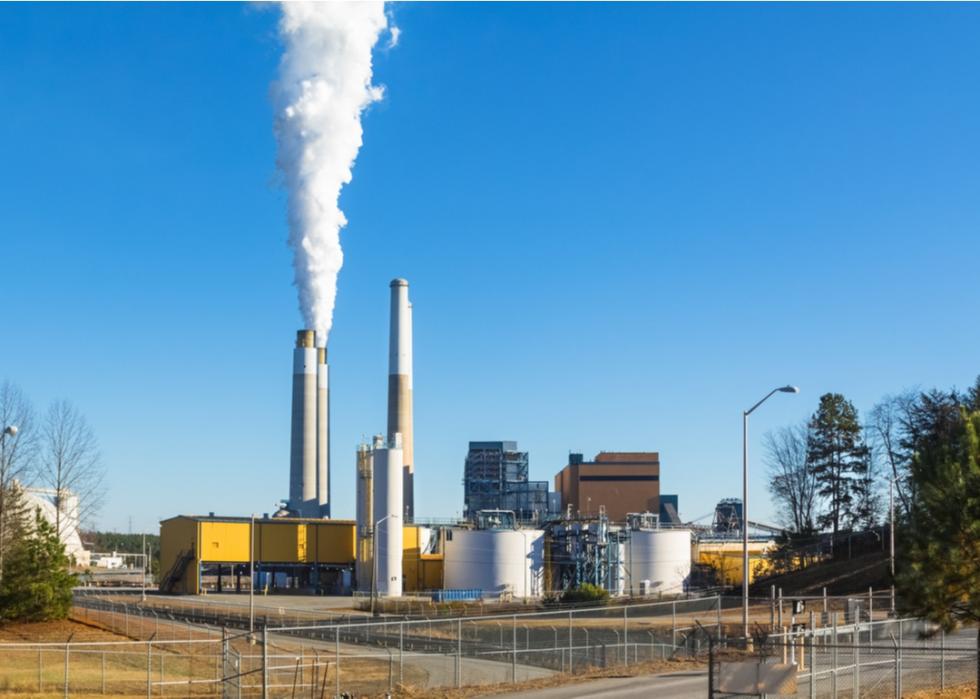
#19. North Carolina
- Population living near toxic release sites: 23.4%
--- 20.6% of state's white population
--- 25.8% of state's Hispanic population
--- 25.9% of state's Black population
--- 25.1% of state's Native American population
--- 20.4% of state's Asian population
--- 17.2% of state's Native Hawaiian/Pacific Islander population
- Total number of sites: 753
In 2020, 20.2 million pounds of toxins were released into North Carolina’s air, and nearly a third of that was methanol. Much of it came from the PCS Phosphate Company, which emitted a little over 4.8 million pounds. The state’s Greenhouse Gas Inventory aims to guard residents against the environmental and health impacts of these toxic releases.
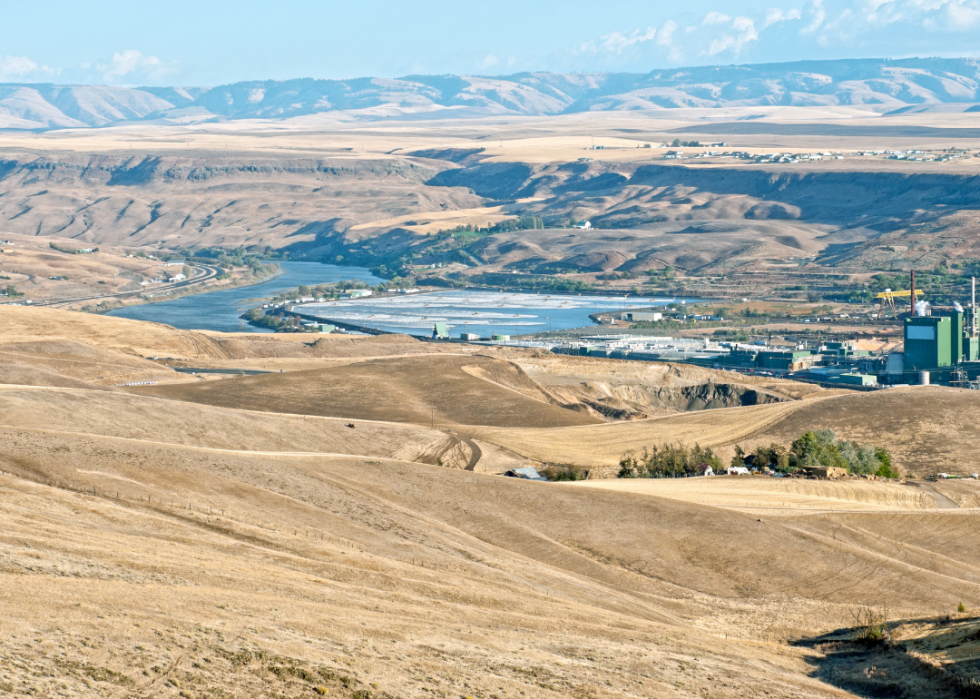
#18. Idaho
- Population living near toxic release sites: 23.6%
--- 20.8% of state's white population
--- 28.7% of state's Hispanic population
--- 21.4% of state's Black population
--- 29.8% of state's Native American population
--- 20.5% of state's Asian population
--- 26.4% of state's Native Hawaiian/Pacific Islander population
- Total number of sites: 119
McCain Foods released over 3.8 million pounds of toxins into Idaho waterways in 2020. Of the 4 million pounds of dumped chemicals, 98% were nitrate compounds.
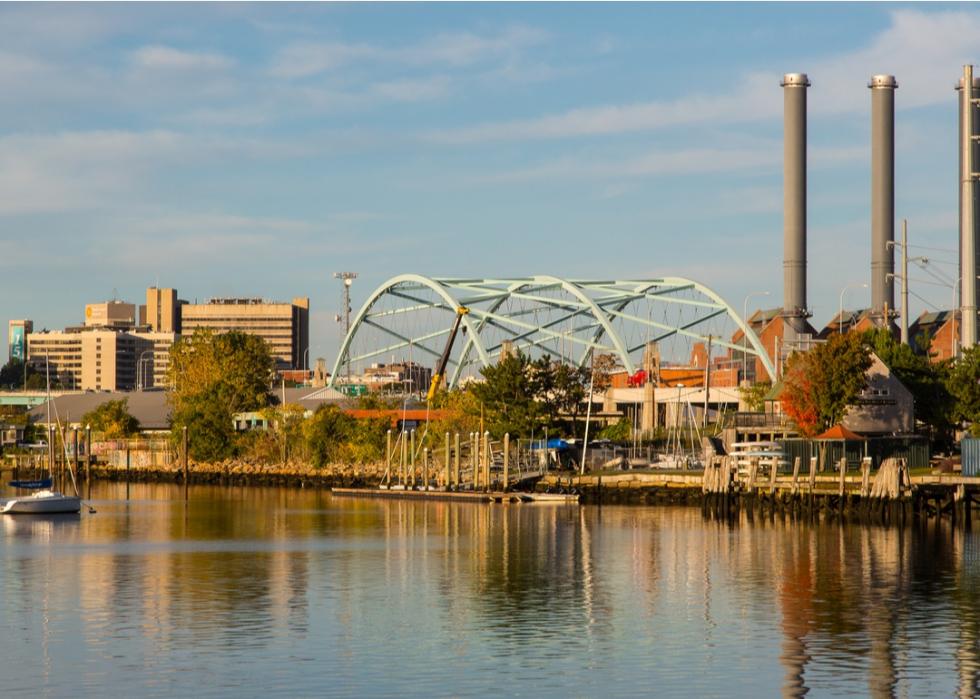
#17. Rhode Island
- Population living near toxic release sites: 23.8%
--- 22.2% of state's white population
--- 18.9% of state's Hispanic population
--- 23.1% of state's Black population
--- 21.3% of state's Native American population
--- 23.6% of state's Asian population
--- 48.1% of state's Native Hawaiian/Pacific Islander population
- Total number of sites: 76
In 2020, the majority of toxins emitted in Rhode Island came from Technic Engineered Powders, totaling over 182,000 pounds. The second-highest-emitting site was Ocean State Power, which released a little over 81,500 pounds into the air.
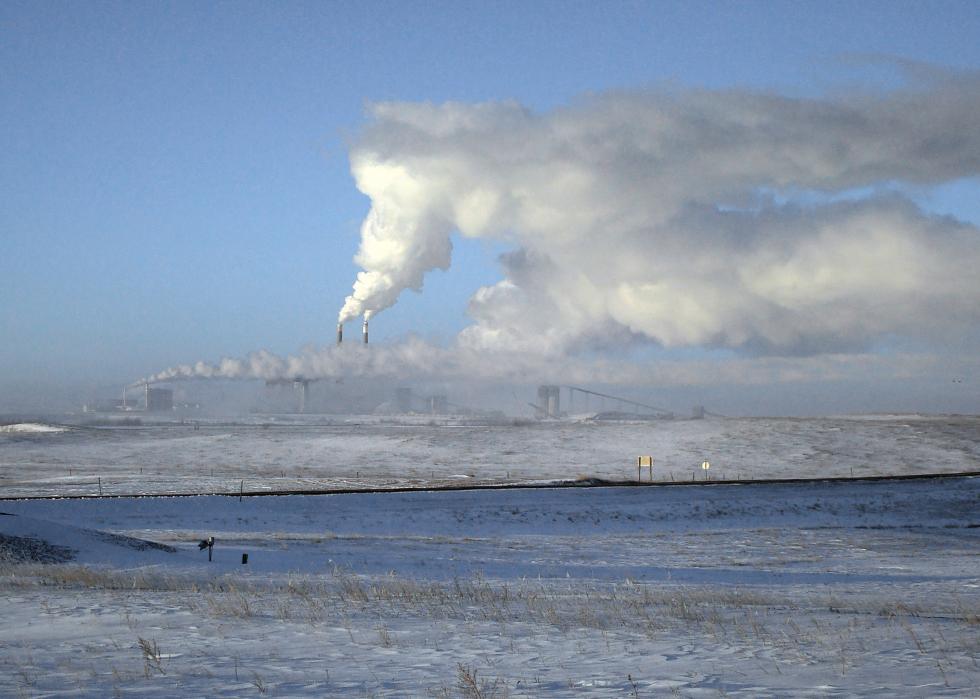
#16. North Dakota
- Population living near toxic release sites: 23.9%
--- 23.3% of state's white population
--- 31.5% of state's Hispanic population
--- 26.0% of state's Black population
--- 19.1% of state's Native American population
--- 17.8% of state's Asian population
--- 12.5% of state's Native Hawaiian/Pacific Islander population
- Total number of sites: 70
Basin Electric's Antelope Valley Station emitted the most toxins in North Dakota in 2020, adding up to over 24 million pounds. Electric utility were the biggest offenders across the state: Minnkota Power Cooperative’s Milton R. Young Station released little over 6 million pounds; the Coal Creek Station, a little over 2.6 million pounds; and Basin Electric's Leland Olds Station, nearly 1 million pounds.
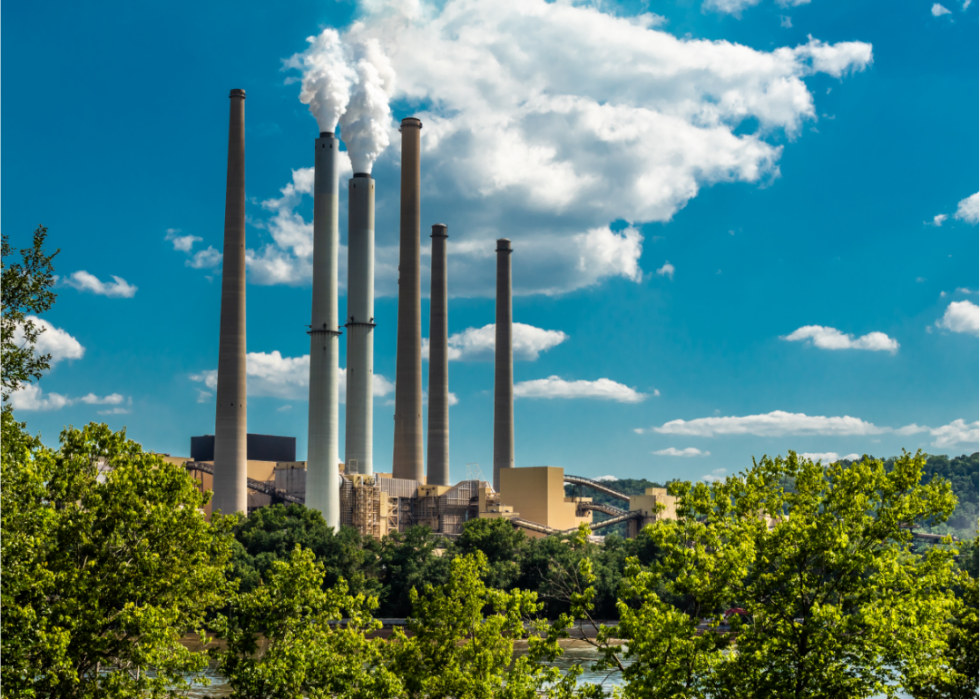
#15. Ohio
- Population living near toxic release sites: 24.7%
--- 25.3% of state's white population
--- 25.2% of state's Hispanic population
--- 17.5% of state's Black population
--- 28.6% of state's Native American population
--- 18.8% of state's Asian population
--- 29.9% of state's Native Hawaiian/Pacific Islander population
- Total number of sites: 1298
Ohio was the sixth-highest toxin-emitting state in 2020, with 90.5 million pounds of total toxic releases. The state's biggest offender was INEOS Nitriles, which released over 7 million pounds of toxins into the land.
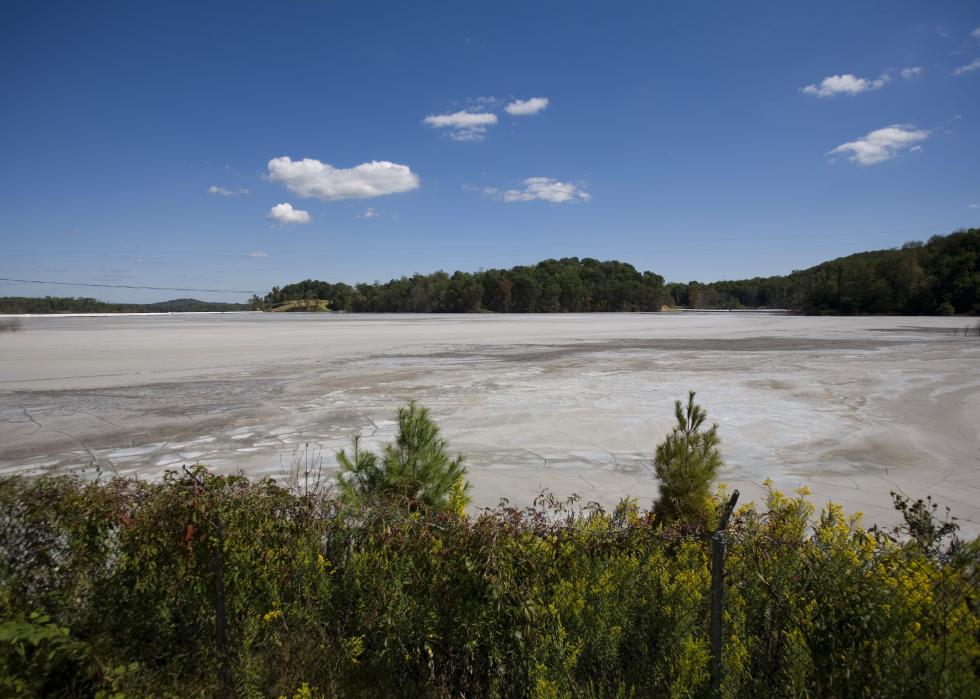
#14. West Virginia
- Population living near toxic release sites: 24.7%
--- 24.3% of state's white population
--- 32.1% of state's Hispanic population
--- 27.6% of state's Black population
--- 24.4% of state's Native American population
--- 18.9% of state's Asian population
--- 30.8% of state's Native Hawaiian/Pacific Islander population
- Total number of sites: 163
Harrison power station was the worst toxin source in West Virginia in 2020, emitting nearly 7 million pounds of toxins into the environment. Appalachian Power’s Amos power plant was the next highest pollutant source, releasing a little over 1.6 million pounds. That year, the state's air pollution was dominated by sulfuric acid, which comprised 72% of the 11 million pounds of chemicals emitted.
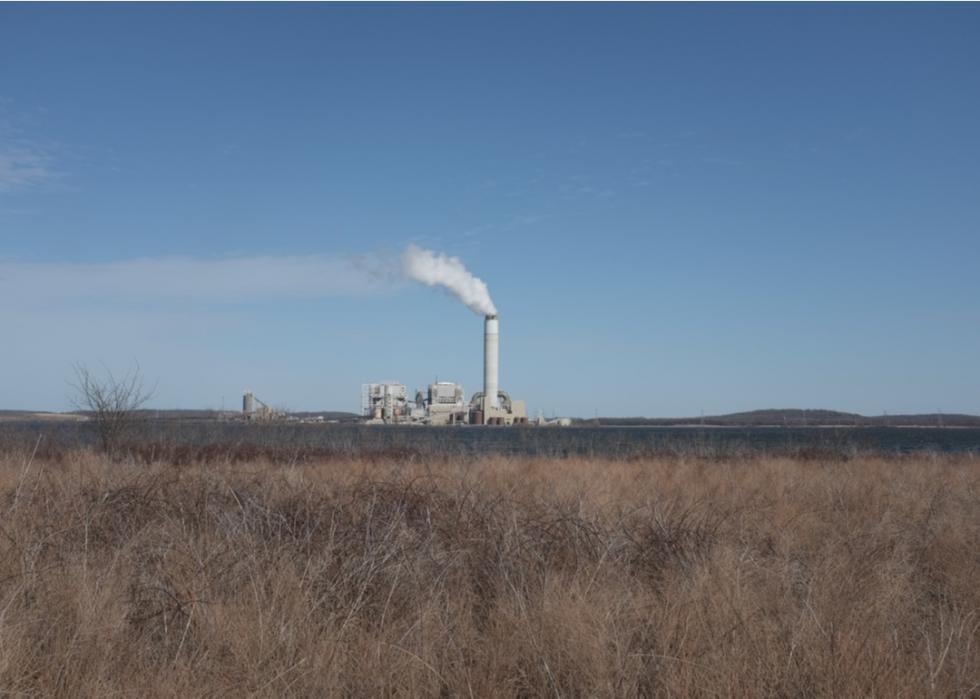
#13. Kansas
- Population living near toxic release sites: 25.0%
--- 23.4% of state's white population
--- 24.6% of state's Hispanic population
--- 15.8% of state's Black population
--- 28.5% of state's Native American population
--- 15.4% of state's Asian population
--- 31.4% of state's Native Hawaiian/Pacific Islander population
- Total number of sites: 322
Of the 15.9 million pounds of toxins released on-site in 2020 in Kansas, 10 million pounds went into the air, 1.3 million pounds into the water, and 4.5 million pounds into the land. PQ Corporation was responsible for 5 million pounds, the most in the state. Second was Koch Fertilizer Dodge City, which released over 3 million pounds.
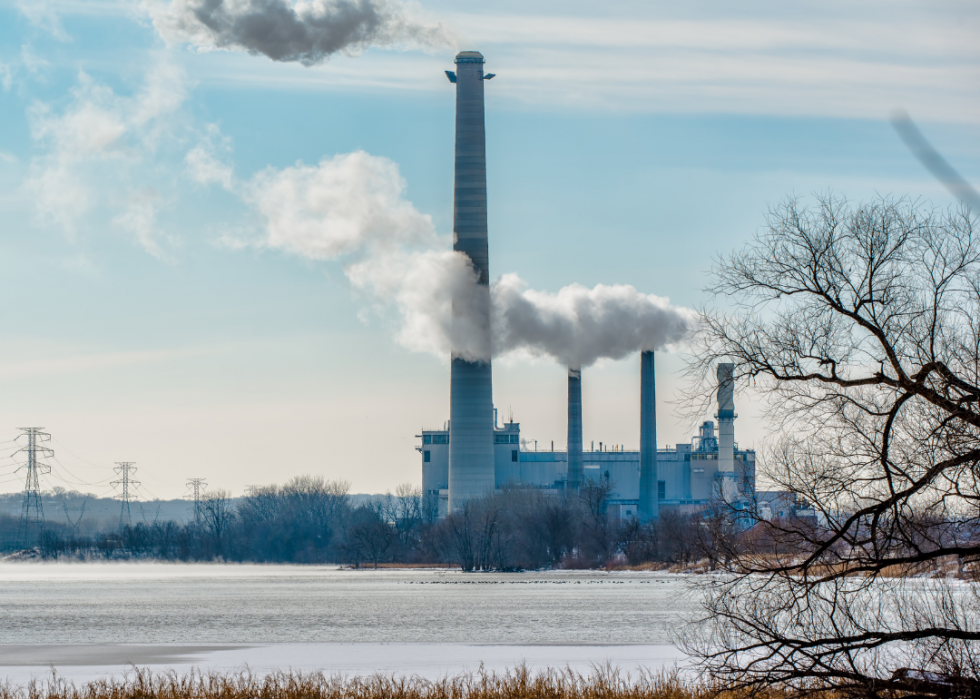
#12. Minnesota
- Population living near toxic release sites: 25.2%
--- 24.9% of state's white population
--- 27.5% of state's Hispanic population
--- 22.0% of state's Black population
--- 19.0% of state's Native American population
--- 19.8% of state's Asian population
--- 15.0% of state's Native Hawaiian/Pacific Islander population
- Total number of sites: 507
In 2020, Xcel Energy's Sherburne County Generating Plant was the Minnesota site that emitted the most toxins, depositing 4.1 million pounds into the land. The state has released a map of areas of environmental justice concern, tracking regions in which impoverished people and people of color are disproportionately affected by ecological dangers. The Minnesota Pollution Control Agency has used this data in an effort to recognize the high level of risk faced by tribal communities.
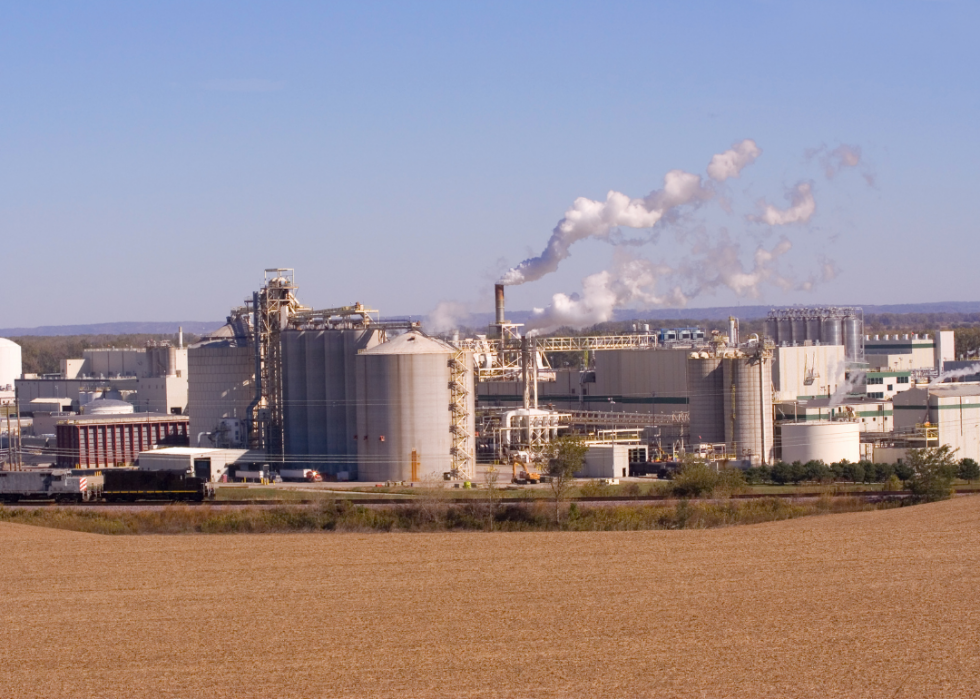
#11. Nebraska
- Population living near toxic release sites: 25.7%
--- 22.9% of state's white population
--- 37.4% of state's Hispanic population
--- 14.1% of state's Black population
--- 20.3% of state's Native American population
--- 13.7% of state's Asian population
--- 25.8% of state's Native Hawaiian/Pacific Islander population
- Total number of sites: 198
Tyson Fresh Meats Inc. emitted the most toxins in Nebraska in 2020, releasing over 2.6 million pounds into the water. Otherwise, much of Nebraska’s toxins came from food suppliers, including Smithfield Fresh Meats and Cargill Meat Solutions.
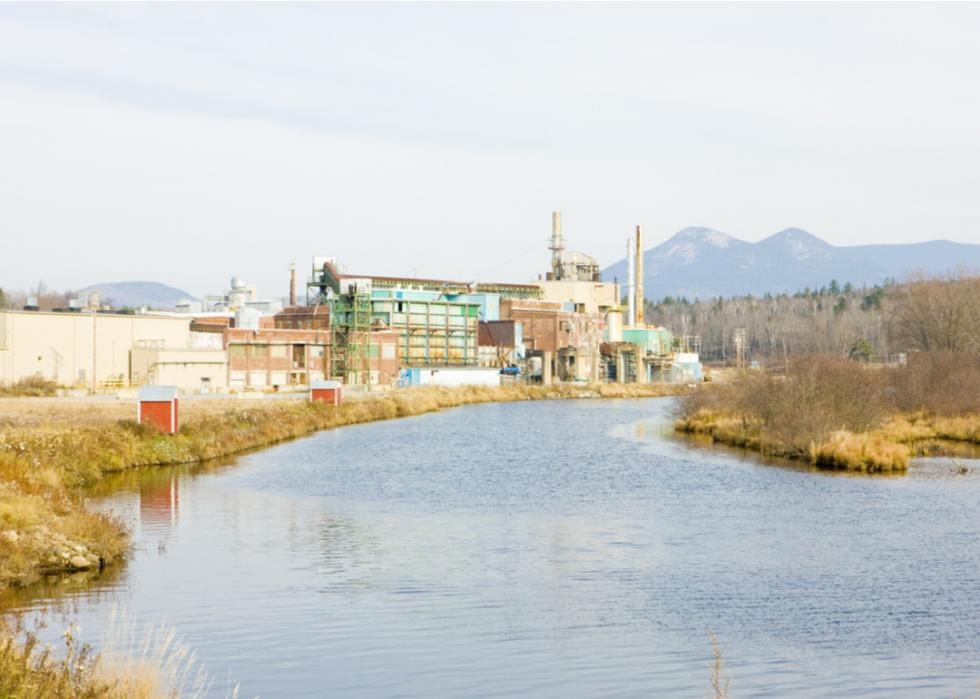
#10. New Hampshire
- Population living near toxic release sites: 26.0%
--- 24.8% of state's white population
--- 29.5% of state's Hispanic population
--- 28.6% of state's Black population
--- 30.6% of state's Native American population
--- 34.1% of state's Asian population
--- 12.6% of state's Native Hawaiian/Pacific Islander population
- Total number of sites: 117
New Hampshire was the third-lowest toxin-releasing state in the country in 2020, with only 447,900 pounds released both on- and off-site. Of this amount, a little over 77,000 pounds came from Webster Valve.
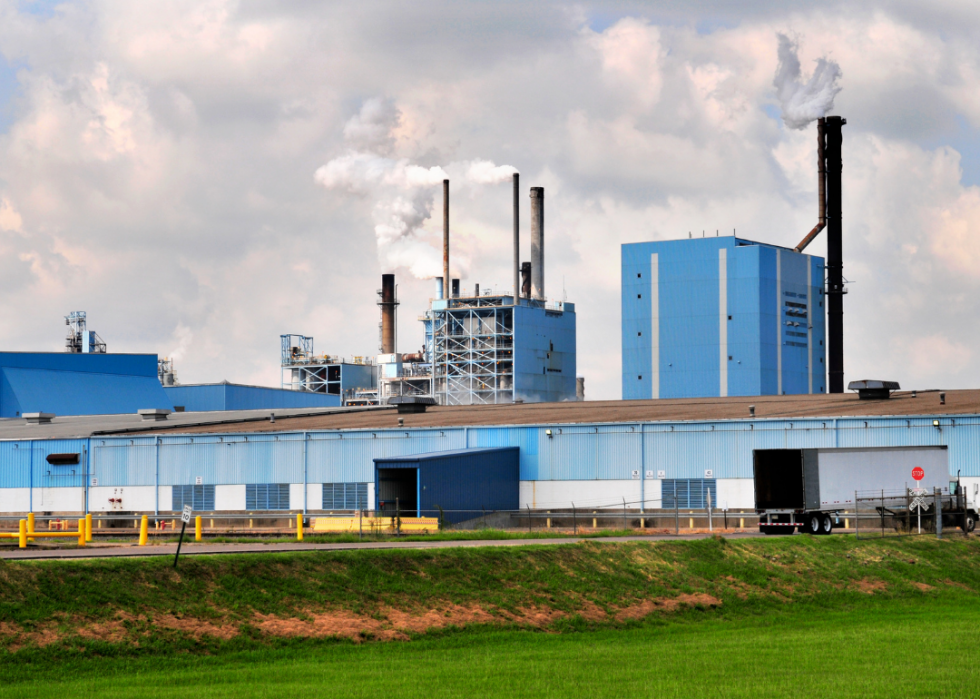
#9. Arkansas
- Population living near toxic release sites: 27.1%
--- 24.0% of state's white population
--- 41.7% of state's Hispanic population
--- 27.4% of state's Black population
--- 30.3% of state's Native American population
--- 25.1% of state's Asian population
--- 69.3% of state's Native Hawaiian/Pacific Islander population
- Total number of sites: 341
Arkansas’ 2020 toxin amounts were primarily due to three paper distributors. Evergreen Packaging released over 2.7 million pounds that year; Clean Harbors El Dorado LLC, over 2.2 million pounds; and Domtar’s Ashdown mill, with 2.1 million pounds.
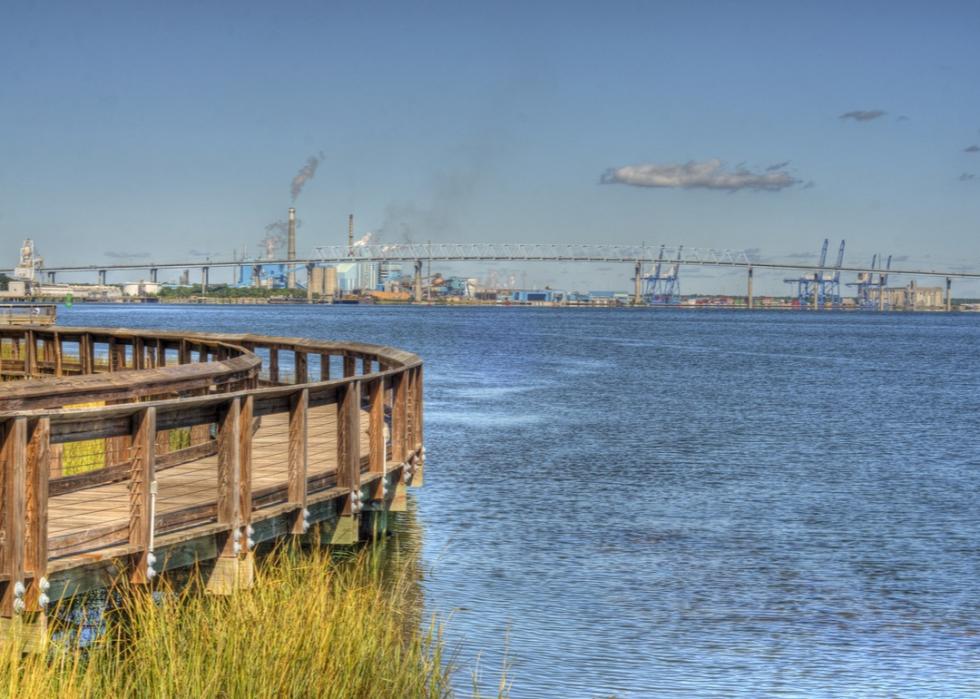
#8. South Carolina
- Population living near toxic release sites: 27.2%
--- 23.7% of state's white population
--- 30.4% of state's Hispanic population
--- 31.7% of state's Black population
--- 26.0% of state's Native American population
--- 25.9% of state's Asian population
--- 33.8% of state's Native Hawaiian/Pacific Islander population
- Total number of sites: 513
In 2020, South Carolina’s toxin rates were most adversely affected by International Paper’s mill in Georgetown, which emitted 2.7 million pounds of toxins, mainly into the air. Nucor Steel’s Berkeley plant released around 1.7 million pounds, and International Paper’s mill in Eastover released over 1.7 million pounds. Of the air pollution in the state that year, 30% was methanol, and 10% was styrene, which is carcinogenic.
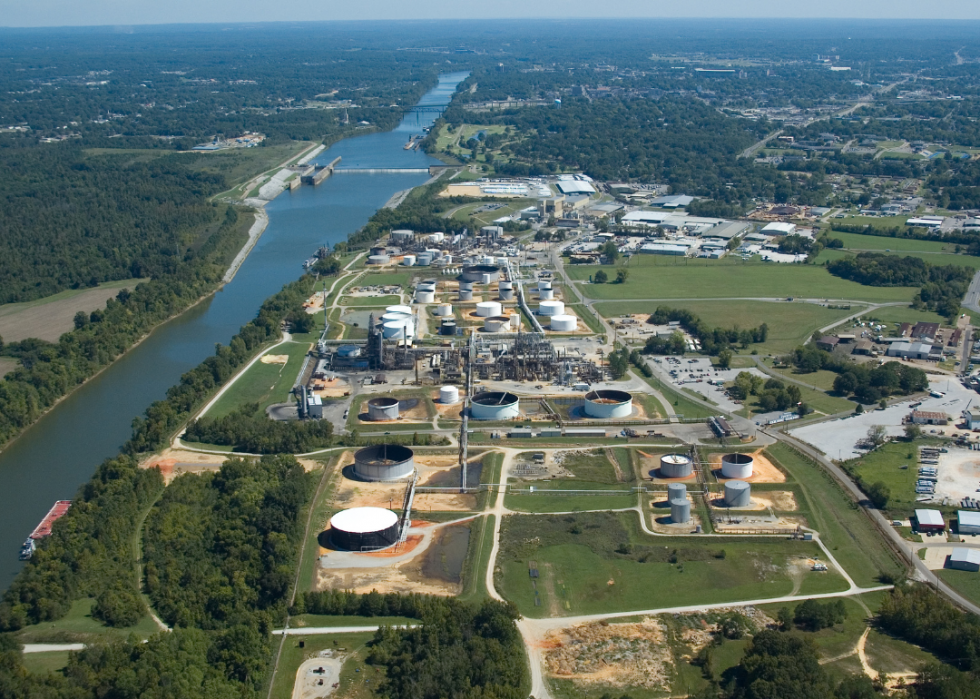
#7. Alabama
- Population living near toxic release sites: 27.9%
--- 26.9% of state's white population
--- 32.2% of state's Hispanic population
--- 27.0% of state's Black population
--- 37.4% of state's Native American population
--- 24.5% of state's Asian population
--- 47.5% of state's Native Hawaiian/Pacific Islander population
- Total number of sites: 553
Alabama experienced a total of 69.9 million pounds of toxins released into its environment in 2020. Chemical Waste Management was the biggest offender, contributing over 15 million pounds. Outokumpu Stainless USA came in second, releasing over 5.3 million pounds, followed by Alabama River Cellulose, which released 4.7 million pounds.
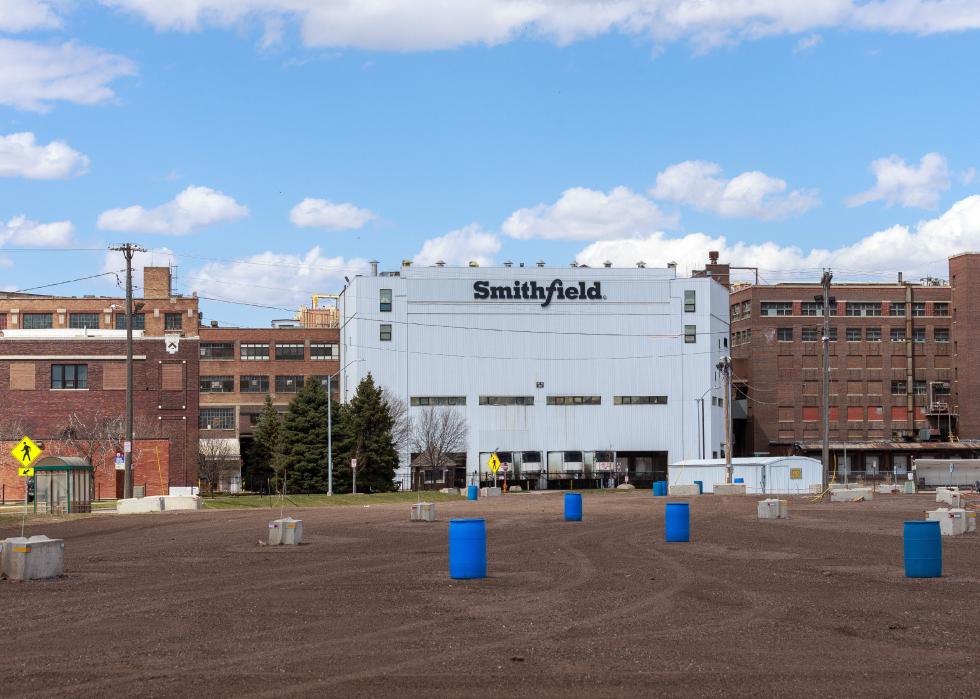
#6. South Dakota
- Population living near toxic release sites: 27.9%
--- 29.0% of state's white population
--- 30.2% of state's Hispanic population
--- 20.1% of state's Black population
--- 13.1% of state's Native American population
--- 20.6% of state's Asian population
--- 23.0% of state's Native Hawaiian/Pacific Islander population
- Total number of sites: 108
Most of the toxins released in South Dakota in 2020 were emitted into the water. Much of this emission came from Smithfield Packaged Meats Corp’s Sioux Falls plant, which emitted 4.9 million pounds of toxins. All 4.5 million pounds of chemicals in the state’s water that year were nitrate compounds.
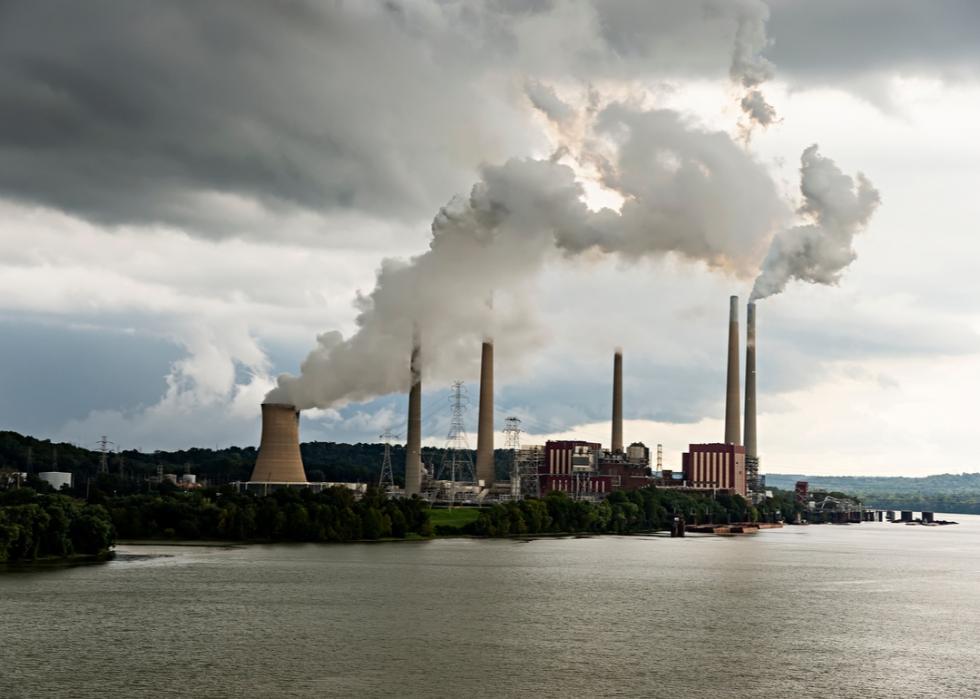
#5. Indiana
- Population living near toxic release sites: 28.8%
--- 28.7% of state's white population
--- 29.6% of state's Hispanic population
--- 19.1% of state's Black population
--- 27.4% of state's Native American population
--- 19.2% of state's Asian population
--- 33.6% of state's Native Hawaiian/Pacific Islander population
- Total number of sites: 881
Indiana ranks third out of all 56 states/territories that released the most toxins in 2020. A total of 104.9 million pounds of toxins were released both on- and off-site. The USS Gary Works was the worst offender, contributing 19.5 million pounds alone; a close contender was Cleveland-Cliffs' Rockport Works, which approached 13 million pounds of toxic release.
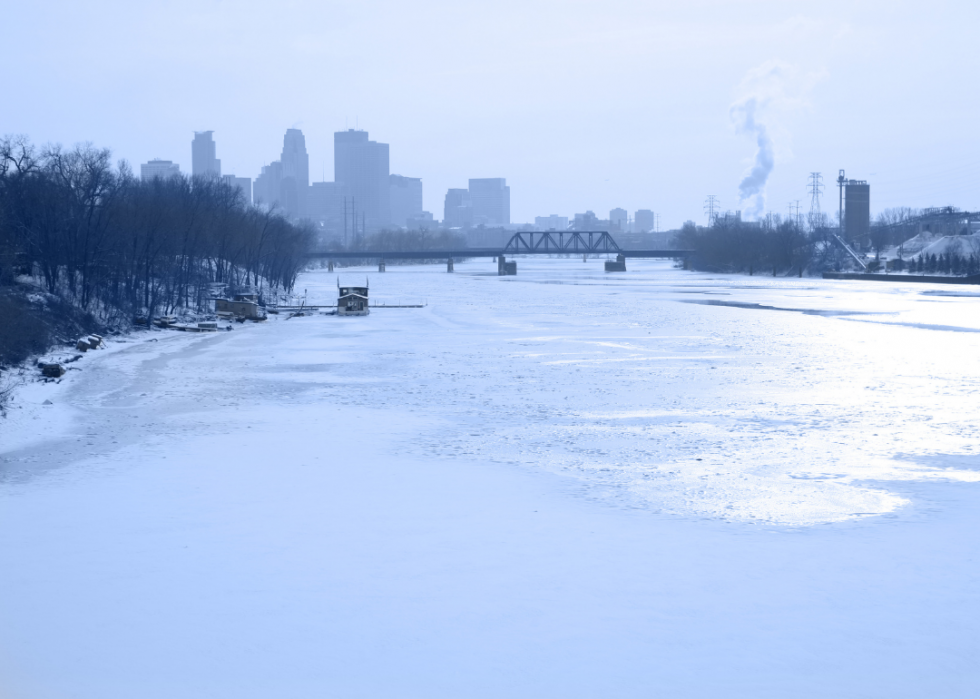
#4. Mississippi
- Population living near toxic release sites: 29.1%
--- 27.6% of state's white population
--- 30.7% of state's Hispanic population
--- 30.2% of state's Black population
--- 20.9% of state's Native American population
--- 19.2% of state's Asian population
--- 25.6% of state's Native Hawaiian/Pacific Islander population
- Total number of sites: 309
In 2020, most of the toxins emitted into Mississippi’s environment came from Tronox LLC, which released nearly 13 million pounds of toxins, mainly into the land. Tyson Farms' Carthage processing plant, on the other hand, emitted nearly 2.2 million pounds of toxins into the state’s water.
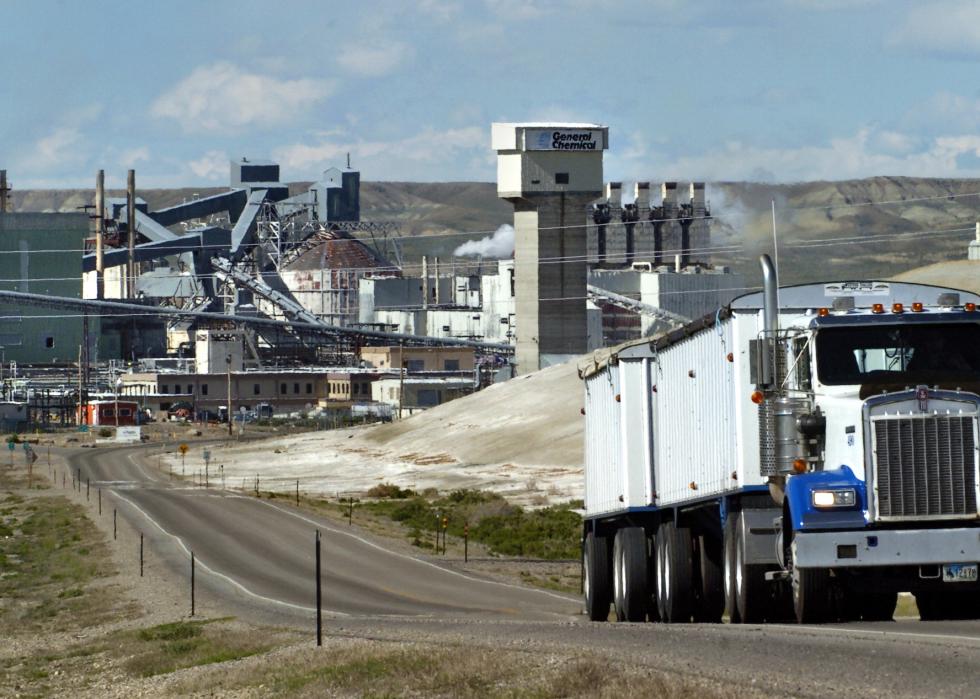
#3. Wyoming
- Population living near toxic release sites: 32.5%
--- 29.8% of state's white population
--- 34.1% of state's Hispanic population
--- 23.6% of state's Black population
--- 33.9% of state's Native American population
--- 29.3% of state's Asian population
--- 27.2% of state's Native Hawaiian/Pacific Islander population
- Total number of sites: 51
Most toxins emitted into Wyoming’s environment in 2020 ended up in the state’s land, but a sizeable portion was released into the air. That year, 51% of the state's airborne pollution was ammonia, and 14% was sulfuric acid-based aerosols. Dyno Nobel's plant in Cheyenne was responsible for releasing over 5.7 million pounds of toxins.
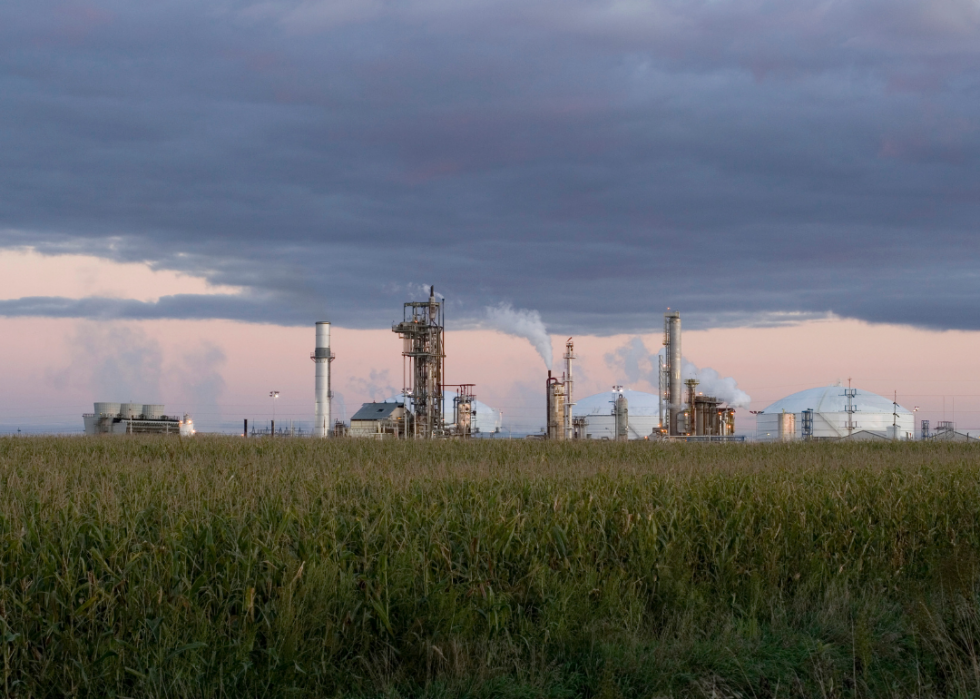
#2. Iowa
- Population living near toxic release sites: 33.5%
--- 32.0% of state's white population
--- 38.4% of state's Hispanic population
--- 26.6% of state's Black population
--- 36.7% of state's Native American population
--- 27.6% of state's Asian population
--- 36.2% of state's Native Hawaiian/Pacific Islander population
- Total number of sites: 479
Swift Pork emitted the most toxins of any site in Iowa in 2020, releasing just over 4.5 million pounds. CF Industries' Port Neal Nitrogen Complex released a little over 3.1 million pounds of toxins, mostly into the ai. Ammonia made up 39% of the 18 million pounds of chemicals emitted into Iowa’s atmosphere, while 88% of the 4.5 million pounds of chemicals in the water were nitrate compounds.
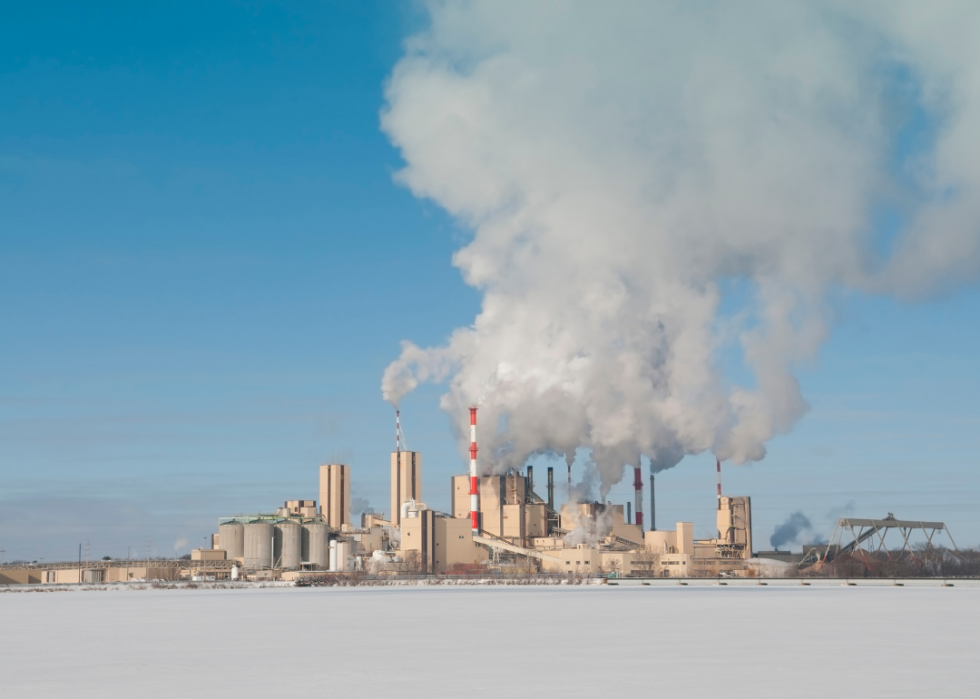
#1. Wisconsin
- Population living near toxic release sites: 37.3%
--- 37.2% of state's white population
--- 32.0% of state's Hispanic population
--- 23.8% of state's Black population
--- 31.6% of state's Native American population
--- 33.3% of state's Asian population
--- 26.9% of state's Native Hawaiian/Pacific Islander population
- Total number of sites: 842
The site that released the most toxins in Wisconsin in 2020 was Foremost Farms USA, which emitted over 2.8 million pounds. In second place, Mullins Cheese deposited about 2.1 million pounds into the land. Finally, Water Quality Center pulp mill released about 1.2 million pounds of toxins that year.



